Unlocking Autumn's Abundance
An invitation to see that which falls from the trees in autumn from the perspective of nature
In each moment we observe the natural world are invited to choose a lens of perception that either embodies, recognizes and amplifies/propagates the inherent abundance of Mother Earth’s living systems or retracts from, obfuscates and diminishes it.
What do you see in the picture above? Is it dirty messy debris tarnishing a well groomed lawn? Or is it a fleeting expression of beauty, generosity and trust gifted to us by Mother Earth... a precious sanctuary for winged beings and other beneficial insects to over winter and a resource for soil building and appreciating poetry for the eyes written in colors on the wind?
The answer depends on the relationship you choose to have with Mother Earth and how you choose to perceive her.
I see many where I live getting all worked up about leaves on the ground in their yard and paying people to pick them up and get rid of them. This kind of adversarial and counterproductive relationship with nature is symbolic of the times and dominant culture we live in... nature offers abundance and solutions... humans fight, disrupt, and stress/complain about natural cycles (creating artificial scarcity, misery and problems in the process).
The images below offer two different potential perspectives on a bunch of items I picked up from a back yard.
When one takes a step back from our modern day programming and instead looks at these items through nature’s eyes it becomes clear that these items are in fact valuable resources and hold much potential. If one uses their pattern recognition skills and observes the functions these items serve in a natural setting there is much wisdom to be gleaned from that which some might see as nothing more than “fall yard debris”. Many of these items are present in our yards and on our properties and are often discarded rather than seen as the valuable gifts they are.
When you pick up a handful of items from the forest floor (or from your backyard in autumn) what you are holding is an access point to an ancient library of knowledge and the potential for a thousand forests to be born.
As I explored in previous substack posts, forests are 'soil seed banks' that are self perpetuating, self regenerating and provide exponential abundance. This abundance is offered in the form of food, medicine, building materials, shelter, beauty and a source of inspiration (and more). The forest speaks to us in a way beyond words and says "If you are sick, I have a full medicine cabinet… and you can have what you need, if you are hungry.. my pantry is always open to you… all I ask is that you pay attention, respect me and offer something in return for the gifts I share with you".
If we practice the way of The Honorable Harvest, we can interact with the forest in a way that honors, regenerates and respects what we are offered so the gifts can continue to flow. I would like to re-iterate that foraging should always be embarked upon with respect, reverence and reciprocity.
Beyond foraging for what we need (and giving back to the forest in some way) we can also emulate the elegant, prolific and resilient system that is a forest in our garden spaces to create our own 'soil seed banks' (that provide abundance in food, medicine and beauty). Self seeding multilayered gardens that fertilize them selves and protect their own water retention are attainable to the one who sees the forest as a teacher.
The following is information about how the items in the picture above (that can serve to offer us food, medicine, valuable garden resources and offer us wisdom.)
-------------------------------------------------------
White pine (needles):
(white pine scientific name “Pinus strobus” and known as “zhingwaak” to the first nation Ojibwe people of the Great Lakes area))
An evergreen and the tallest tree in the Northeast, they can reach at least 180ft in height. Their long, slender needles (2-5 inches long) grow in bundles of 5 needles....a good mnemonic device for ID is there are 5 letters in the word "white" and 5 needles per bundle. They grow pine cones that can be quite large-4-7 inches long- and are often covered in resin. Bark is light brown and heavily grooved in older specimens and smooth and brownish-grey in younger trees. They commonly reach 200 years in age and can grow to be over 450 years old.
White pine needles provide Excellent mulch material for established garden beds – One of the benefits is due to terpenes in the needles. Terpenes are chemical molecules said to retard germination. When you use ‘pine straw’ (pine needles as mulch) in established beds is contributes to the retardation of weed seeds. The pine needles also add nutrients to the soil as they decompose. It's sustainable (and can even be regenerative if you are also propagating baby white pines :) ). No trees are harvested to produce it. It promotes soil health. The soil breathes better, doesn't compact, and allows for better water infiltration with pine straw than with other mulches. Another benefit of using pine needles as mulch is they interlock as to prevent blowing away in the wind.
Collection for medicinal uses: The needles can be collected anytime they are green, which is pretty much all year, including winter. In the fall they do lose some needles- some turn yellow and fall, while others stay green and intact- it is best to wait until after this fall shedding to collect. The needles, as well as thin twigs may be harvested together. Harvest the tips of the branches. Even better, collect dropped branches from the forest floor after a storm for the most honorable harvest.
Constituents: Vitamin C (needles), Suramin, Alpha-Pinene, Beta-Pinene, Beta-Phellandrene, D-Limonene, Germacrene D, 3-Carene, Caryophyllene, vitamin A, and. Eastern white pine needles also contain shikimic acid, the same molecule found in star anise herb used historically in Traditional Chinese Medicine to treat plagues and respiratory illness. For more information on Shikimic Acid and the many medicinal benefits of Pine Needles (and other types of edible conifer foliage) you can read my other article that dives into that topic more deeply here.
Medicinal Actions (include but are not limited to): Expectorant, antiviral, circulatory stimulant, mild diuretic, pectoral, immune stimulant, cellular regeneration and heavy metal detox (chelation).
Medicinal Uses: Specific for respiratory and bronchial complaints, especially when wet and cold in nature. A tea of the needles, or the needles with thin twigs included, is said to be helpful in promoting expectoration and removal and thinning of mucous from the lungs. It was traditionally used for coughs, colds, bronchitis, laryngitis, croup. The needles are widely known to be extremely high in Vitamin C and are a great addition to a tea for the common cold or as a winter immunity tea. Once used to treat scurvy! They are actually reported to be 5x as high as oranges, per volume, in Vitamin C! A deficiency of Vitamin C can also negatively impact the adrenals, as well as the integrity of tissues in the body. Of course Vitamin C is heat sensitive, but it is so abundant in pine needles that steeping in hot water as a tea still provides a great source of this vitamin. The needles and twigs also make for a fabulous steam for congestion in the lungs. The inner bark is the part that was offical to the Electics (the Herbal doctors of the late 1800's and early 1900's). and was considered to be very useful as an expectorant as well and can be decocted and sweetened with honey- best used after the infectious, feverish stage of a sickness has passed. The pea-sized piece of the pitch can also be chewed to promote expectoration. It is also considered to be a gently warming circulatory stimulant and I can be used to make bath salts. The fresh needles of white pine can be infused into salts for a warming winter bath, and also for general aches and pains. It is invigorating and enlivening in nature, and the ample essential oils are quite immune-activating too. You can add oil to the bath salts to make it into a salt scrub, which can be very immune-boosting, as it stimulates lymph flow. The sap is considered by traditional healers to offer a whole host of topical applications including splinters, sores, boils, sore muscles and rheumatism, cuts and swellings and is sometimes mixed with butter or fat for this. To remove woody debris and bark from collected pitch, gently heat on low and strain. Sap dissolves readily into warmed oils to be added to salves. It is said to contain “abietic resins” which stimulate topical circulation, inflammatory response and the “foreign body response”- meaning pus and fluids will build up much more quickly on a wound that is dressed with pine pitch. The other side of the coin is that one moves through the healing process much faster and avoids infection. It's quite important to note that the modern herbalists learned of the medicinal properties of this North American plant from indigenous peoples, including the Algonquin, Chippewa, Ojibwe, and likely many more.
Spruce, Pines, Hemlock, and Fir all share many medicinal properties. Perhaps their most evident medicine is the essential oils contained within their needles and sap. This is what gives them their characteristic evergreen fragrance and is also why their needles are so flammable and make such great incense. Whenever a plant contains essential oils it’s safe to say it contains some level of antimicrobial activity. Their essential oils are said to show antiseptic activity when applied topically to wounds (especially the sap) and are particularly purifying to the lungs, which leads us to the respiratory system.
Lastly, Pines, Spruce, Firs, and Hemlock make fantastic food as medicine. Most of the evergreens in the Pine Family are so tasty and aromatic. They lend themselves well to infused honey, confections, spice blends, finishing salts, infused vinegars, marinades, wild soda, herbal butters and ghee, chai, chocolate, simple syrup, tea, and more.
The needles are also quite pleasant tasting when prepared properly. Their needles are rich in vitamin C (particularly White Pine), and can form the basis for a lovely winter (or spring) immune tea, especially when combined with Rose Hips, and Ginger.
These evergreens are also nice, warming, circulatory stimulants- another benefit from the essential oils. They can be employed externally in massage oils, salt and sugar scrubs, and bath salts for this use and there’s nothing like an evergreen hot toddy made with an elixir and honey to warm the body up! On an energetic level these trees are said to lift the spirits. They are said to have a warming and slightly energizing disposition and, especially when enjoyed in the winter months, can help keep spirits bright during the darkest days of the year. I believe that we work with the local plants growing abundantly around us we begin to attune to and harmonize with our local landscape, ecosystem, and its rhythms. In other words we're more in tune with the Earth and her subtleties, seasonal shifts and more.
White Pine Cones (not in the picture above but also a common item I end up being paid to remove from people’s yards)
Young green pine cones (and spruce cones) can be used to make a medicinal syrup that is used as a gormet condiment in some parts of Europe.
Here is a link to a recipe for Pine Cone syrup: https://foragerchef.com/mugolio-pine-cone-syrup/
Mature White Pine cones also contain edible seeds (“pine nuts”). The pine nut you buy at the store is from pinyon pine (Pinus edulis) and while not as flavorful, white pine nuts are edible. But they are small. It’s a lot of work to open the cones and collect the teeny tiny nuts, which are in shells.
Collecting seed from white pines cones:
Gather white pine seeds in late summer after the long, curving cones dry out and the scales begin to lift.
Place the cones in a paper bag. Set the bag in a warm, dry spot outdoors for one week, or until the cones drop their seeds (or remove by hand if they are stuck).
Propagation of White Pine:
It is best to sow the seed in individual pots in a cold frame as soon as it is ripe if this is possible otherwise in late winter. A short stratification of 6 weeks at 4C can improve the germination of stored seed. Plant seedlings out into their permanent positions as soon as possible and protect them for their first winter or two. Plants have a very sparse root system and the sooner they are planted into their permanent positions the better they will grow. Trees should be planted into their permanent positions when they are quite small, between 30 and 90cm. We actually plant them out when they are about 5 - 10cm tall. So long as they are given a very good weed-excluding mulch they establish very well.
White Pine seeds as food:
White Pine seeds (or 'nuts' if you will) are usually a little smaller than store bought 'pine nuts' (and do require quite a bit of effort to extract from the cones unless you have specialized equipment or get inventive) but these are nevertheless a very worthwhile food that can be added to the long list of foods, medicines, materials and other useful compounds that Eastern White Pines can provide in the context of being part of a food forest design.
𝗘𝗮𝘀𝘁𝗲𝗿𝗻 𝗪𝗵𝗶𝘁𝗲 𝗣𝗶𝗻𝗲 𝘀𝗲𝗲𝗱𝘀 𝗰𝗼𝗻𝘁𝗮𝗶𝗻 𝗺𝗲𝗮𝗻𝗶𝗻𝗴𝗳𝘂𝗹 𝗾𝘂𝗮𝗻𝘁𝗶𝘁𝗶𝗲𝘀 𝘁𝗵𝗲 𝗳𝗼𝗹𝗹𝗼𝘄𝗶𝗻𝗴 𝗻𝘂𝘁𝗿𝗶𝗲𝗻𝘁𝘀 𝗮𝗻𝗱 𝗯𝗲𝗻𝗲𝗳𝗶𝗰𝗶𝗮𝗹 𝗰𝗼𝗺𝗽𝗼𝘂𝗻𝗱𝘀: Lutein, Zeaxanthin, Vitamin E (tocopherol- alpha and Tocopherol-gamma), Calcium, Copper, Selenium, Vitamin C, Thiamin, Riboflavin, Niacin, Pantothenic acid, Vitamin B-6, Folate, Choline, beta-Carotene, Beta-sitosterol, Tryptophan, Threonine, Isoleucine, Lysine, Phenylalanine, Tyrosine, Valine, Glutamic acid, Glycine and fiber.
I was not able to find information on whether or not the seeds contain Shikimic Acid (as the foliage and bark does) but it seems likely to me that they would given a seed is a template for all those parts of the adult tree to form.
In addition to what was listed above, one serving of white pine seeds (28 grams) contains:
-169 milligrams of potassium (4% of the daily value)
-9 grams of protein (7% of the daily value)
-1 milligrams of thiamin (7% of the daily value)
-6 milligrams of iron (8% of the daily value)
-7 milligrams of vitamin E (9% of the daily value)
-8 milligrams of zinc (12% of the daily value)
-163 milligrams of phosphorus (16% of the daily value)
-71 milligrams of magnesium (18% of the daily value)
-3 micrograms of vitamin K (19% of the daily value)
Some of the Health benefits offered by eating White Pine Seeds include:
1. Promoting heart health:
Pinolenic acid is a polyunsaturated fatty acid isolated exclusively in pine seed oils.
Pinolenic acid may help lower LDL cholesterol levels in the blood. Rat studies have suggested that pinolenic acid causes the liver to take up and metabolize more LDL cholesterol from the blood
2. Enhancing Brain Health:
As stated above, White Pine seeds are rich in iron, which is a mineral required for storing and transporting oxygen. However, iron is also important for brain health too.
Also, research shows that other nutrients in White Pine seeds, like magnesium, can help treat anxiety, depression, and stress. One study proved that dietary intake of magnesium could help improve the condition of adolescents with depression and anxiety disorders. Higher levels of magnesium can lead to lesser emotional outbursts and other behaviors associated with mood disorders
3. Lowers Cancer Risk:
The cancer health benefits of White Pine seeds can be attributed to their magnesium content. This mineral has been linked to a lower risk of various types of cancer. One study shows that a decrease in serum magnesium by 100 milligrams per day can increase the risk of pancreatic cancer risk by 24 percent. Therefore, increasing your blood magnesium levels may help to lower such risk.
4. Strengthening Bones
Calcium is well-known for its bone health benefits. Did you know, though, that vitamin K can help bones too? One study talks about how this vitamin can help in the treatment and prevention of osteoporosis. It not only increases bone mineral density but also reduces fracture rates.
And here’s something quite interesting. One very common reason for the deficiency of vitamin K is the intake of cholesterol-lowering pharmaceuticals. But when you take White Pine seeds, you may not need any cholesterol-lowering medication since the nuts have cholesterol-lowering potential, not to mention that they provide a rich source of vitamin K.
5. Boosts Immunity:
The manganese and zinc in White Pine seeds can do a great job at boosting immune health. While the former helps maintain the body’s hormonal balance and strength of connective tissue, the latter boosts immunity and aids wound healing.
As per one report, additional zinc in the diet can help boost the immune system in older adults. Zinc is associated with an improvement in the function and number of T-cells, which are a type of white blood cells that destroy invading pathogens
6. Improves Vision Health:
White Pine seeds contain a lot of lutein, which is an antioxidant also known as the eye vitamin. Several surveys have revealed that most Americans taking the Standard American Diet don’t consume adequate amounts of lutein.
There are about 600 carotenoids your body can utilize, of which only about 20 are transported to your eyes. Of these, only two are deposited in your eyes in large amounts. One is lutein, and the other is zeaxanthin. Both these nutrients help prevent macular degeneration and glaucoma by fighting free radical damage.
7. Enhances Skin And Hair Health:
High concentrations of various essential vitamins, minerals, and antioxidants make White Pine seeds amazingly helpful for skin care. Vitamin E and antioxidants work to hold back the aging process. And thanks to its anti-inflammatory properties, White Pine seed oil is very suitable for sensitive skin types. It nourishes the skin and protects it from various common conditions. Moreover, it also has great moisturizing effects on the skin.
Pine nut oil is well known for massage therapy because of its healing property, White Pine seed oil offers the same benefits. It helps to reduce a number of skin issues like itching, psoriasis, pimples, eczema, scabies, and sores. This nut oil gives the skin a revitalized and fresh look.
In addition, White Pine seeds contain a high concentration of proteins. The protein content in the nuts protects the hair against damage and keeps it strong, healthy, and lustrous.
-------------------------------------------
Maple (Japanese, paperbark and Sugar) and Oak leaves:
Shredding maple and Oak leaves makes for a very useful garden resource.
If you have an abundant source of leaves in the fall, shred them. Your garden will benefit in a big way. Here how to use them:
- Insulate Tender Plants: A 6-inch blanket of leaves protects tender plants from winter wind and cold. Cover cold-hardy vegetables—such as carrots, kale, leeks and beets—and you'll be able to harvest them all winter.
- Boost Your Compost Pile: Carbon-rich leaves balance high-nitrogen compost ingredients such as fresh grass clippings.
- Improve Your Soil: Mix shredded leaves right into your garden. Next spring, your soil will be teeming with earthworms and other beneficial organisms.
- Make organic fertilizer out of your leaves: https://www.motherearthnews.com/organic-gardening/what-to-do-with-raked-leaves-zm0z22aszawar/
- Make "Leaf Mold": Simply rake the leaves into a big pile. If you shred them, they will decompose faster, but you can still make leaf mold without shredding. After one to three years, fungus will have broken the leaves down to a special compost that smells like a walk through the woods. Leaf mold is high in calcium and magnesium and retains three to five times its weight in water—rivaling peat moss.
- If you are a fan of lasagna gardening, also known as sheet composting, autumn leaves are a true gift. You can build a lasagna garden in the fall with your leaves and other compostables, let it sit over the winter, and plant in the new bed in the spring.
---------------------------------------
Pin Oak Acorns:
Scientific name: “Quercus palustris” and known as “mitigomizh” to the First Nation Ojibwe people of the Great Lakes area)
They can serve as a valuable free source of food. Acorns can be processed (leached in water to remove bitter tannins) the ‘nut meat’ ground into a fine powder and then used as a flour substitute (or flour enricher).
You could also plant the acorn and allow it to grow into a tree. Oaks (such as the Pin Oak or Quercus palustris) provide food, homes and shelter for animals, both large and small. Hundreds of vertebrates and thousands of insects are associated with the oak woodlands. Many creatures make meals of acorns and oak leaves. Bears, mule deer, and about two dozen species of birds eat acorns. Scrub jay, magpies, wood ducks, wild turkeys, quail, flickers and acorn woodpeckers all depend on oaks for food. Insects also feed on leaves, twigs, acorns, bark and wood of oak trees. Many of these six-legged creatures become meals themselves. Warblers, vireos and orioles are among the many insectivorous birds that feed in oaks.
Animals help oak trees by planting their seeds. Left above ground, acorns dry out and fail to grow. Squirrels and scrub jays hide acorns for later consumption. Well-hidden seeds are protected from freezing and drying. Many of these seeds grow into new trees.
Some animals depend on oaks to keep them safe from predators, while others use the trees as a home. Barn owls, wood ducks and many other cavity-nesting birds make their homes in oaks. In winter, ring-tail cats and squirrels sleep in oak tree cavities; in summer, squirrels make nests in oaks. Bees build beehives in hollowed-out oak trunks. Other creatures, such as spiders and centipedes, can be found on oak bark or hiding beneath it. Nematodes (tiny round worms) and earthworms live within the root system. Look in the leaf litter at the base of the tree to find slugs, snails, wood lice, beetles, millipedes, centipedes, caterpillars, earwigs, ants and spiders.
Oaks continue to be useful to wildlife even after they die. Salamanders, worms, snails, termites and ants live in decomposing logs and help turn wood into humus, which enriches soil.
Medicinal use of Pin Oak: An infusion of the inner bark has been used to treat intestinal pains. Any galls produced on the tree are considered to be strongly astringent and can be used in the treatment of haemorrhages, chronic diarrhoea, dysentery etc.
Other uses of the tree: A mulch of the leaves repels slugs, grubs etc, though fresh leaves should not be used as these can inhibit plant growth. Oak galls are excrescences that are sometimes produced in great numbers on the tree and are caused by the activity of the larvae of different insects. The insects live inside these galls, obtaining their nutrient therein. When the insect pupates and leaves, the gall can be used as a rich source of tannin, that can also be used as a dyestuff. A black ink is made from the galls. Wood - strong, hard, coarse grained, heavy, often knotty owing to the persistence of many small limbs. It weighs 43lb per cubic foot. It is occasionally used for shingles, clap-boards, furniture, wooden nails etc and as a fuel.
Propagation of Pin Oak:
Seed - it quickly loses viability if it is allowed to dry out. It can be stored moist and cool overwinter but is best sown as soon as it is ripe in an outdoor seed bed, though it must be protected from mice, squirrels etc. Small quantities of seed can be sown in deep pots in a cold frame. Average germination rate is about 68%. Plants produce a deep taproot and need to be planted out into their permanent positions as soon as possible, in fact seed sown in situ will produce the best trees. Trees should not be left in a nursery bed for more than 2 growing seasons without being moved or they will transplant very badly.
--------------------------------------------------
Sugar Maple Keys:
(known as “Acer saccharum” to modern science and known as “Ininaatig” to the first nation Ojibwe people of the great lakes area). The seeds (aka “keys”) can serve as a valuable food source. When you think of sugar maple trees, you probably immediately think of delicious maple syrup. But maple seeds are also a tasty and nutritious snack. While raw seeds may taste slightly bitter, cooked seeds have a sweet flavor. They’re easy to collect if you have a tree in your backyard or are out on the trail, and can be eaten raw, roasted, or boiled. Prepare them any way you like to make your own healthy snack or garnish.
Maple seeds are at their ripest in warm weather. As the weather gets colder, the seeds start entering their winter modes and become more bitter. Ripe seeds have a full, green pod. If the pod is starting to shrivel or turn brown, the seeds will probably be bitter. Seed pods fall off the tree when they’re ripe. To get the freshest seeds, pick up newly-fallen pods that are still all green. Maple tree seeds contain protein, and can be used as survival food in winter months, however like many wild edibles the best flavours are enjoyed in spring. As the year progresses they tend to gain a hint of bitterness and by the time winter rolls in, what is left is shriveled and somewhat bitter; but make no mistake, they are still edible.
If you feel eating maple seeds raw just doesn’t do it for your taste buds then boil them for about 15 minutes or until soft. Drain and season with whatever you think you will enjoy (butter and spices). Another nice way to enjoy them is to toss spring maple seeds into a salad.
Roasting maple tree seeds is great for eating them as a snack or toss onto a salad or as a garnish on soup. You can roast them by placing the seeds on a baking sheet and sprinkle with spices you like. Bake at 350 degrees Fahrenheit for about 8 to 10 minutes. Drying out the seeds is another method to preserve and enjoy them as a food. You can use a food dehydrator, drying in the sun on a hot, dry day, or in the oven at a very low temperature. Once they are dried grind them into powder and use them as a spice, as flour, or as a soup thickener.
They are also tasty when added to mashed potatoes (mash your potatoes and add some fresh or roasted maple seeds into the mash)
You can also plant a maple key and allow it to grow into a beautiful tree.
The Sugar Maple plays an important ecological role in many forests of the northeastern US and eastern Canada. One particular species of bird called the Leaf Flycatcher (Empidonax minimus) has been shown to have increased stress when sugar maples in a particular area are declining. This is a result of a decrease in the sugar maples’ foliage. This species of bird catches its food by picking up insects off of leaves. So, a decrease in sugar maple foliage results in less leaves with insects residing on them for the bird to catch and eat.
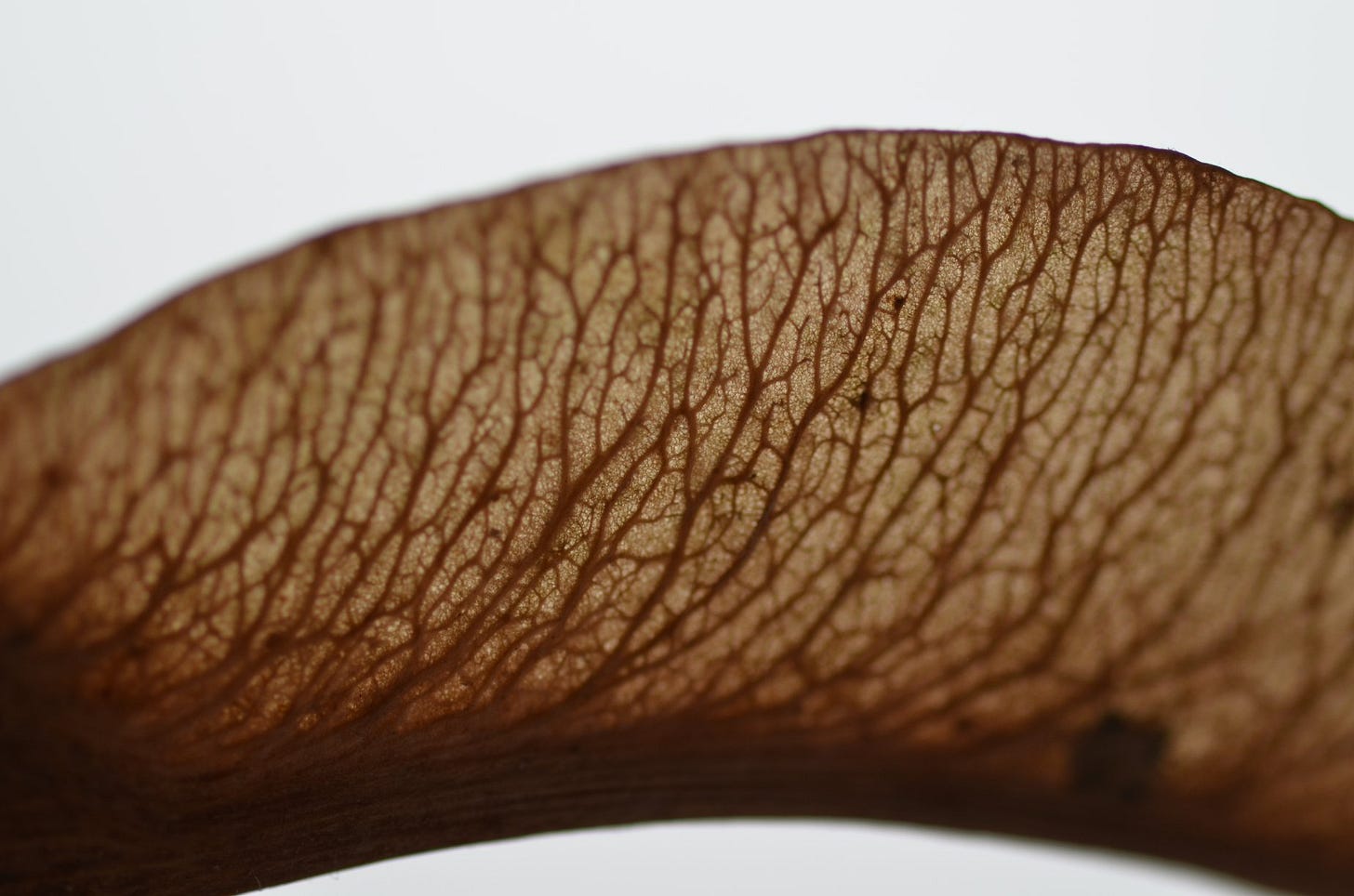
In addition, the sugar maple trees produce a large amount of leaf litter every fall and it is this leaf litter that helps contribute to earthworms’ success. Earthworms are also important for Acer saccharum itself as it facilitates the breakdown of the leaf material. They will take the leaf litter and break it down to its essential nutrients that the sugar maple can take up and reuse later.
Lastly, the roots of the sugar maple also have important interactions with fungi in which endomycorrizal or ectomycorrizal interactions have helped them to increase their water and nutrient absorption. This interaction is a necessity as the sugar maple would not be able to grow to such large heights without this interaction. The fungi as well would not be able to grow as well if they were not provided with an easy access to nutrients from the Sugar maple.
Sugar maple trees provide important habitat for wildlife. Moose, deer, squirrels, rabbits, hares, porcupines, mice and many species of birds (such as Songbirds and woodpeckers) feed on maple bark, buds, twigs, seeds and insects that live on/ in the bark. Also, though the flowers appear to be wind-pollinated, the early-produced pollen is important for Apis mellifera (honeybees) and other insects.
Medicinal use of Sugar Maple: A tea made from the inner bark is said to be a blood tonic, diuretic and expectorant. It has been used in the treatment of coughs, diarrhoea etc. A compound infusion of the bark has been used as drops in treating blindness. The sap has been used for treating sore eyes. The inner bark has been used as an expectorant and cough remedy. Maple syrup is used in cough syrups and is also said to be a liver tonic and kidney cleanser.
Edible parts of Sugar Maple: The sap contains quite a large proportion of sugar. This can be used as a refreshing drink, or be concentrated into a syrup by boiling off the water. The syrup is used as a sweetener on many foods. The sap can be harvested in late winter or early spring, the flow is best on a warm sunny day after a frost. Trees on southern slopes in sandy soils give the best yields. It is best to make a hole about 7cm deep and about 1.3 metres above the ground. Yields of 40 - 100 litres per tree can be obtained. The best sap production comes from cold-winter areas with continental climates. The sap contains 2 - 6% sugar, thus about 32 litres are required to make a litre of maple syrup. Self-sown seedlings, gathered in early spring, are eaten fresh or dried for later use. Seeds - cooked. The wings are removed and the seeds boiled then eaten hot. The seed is about 6mm long and is produced in small clusters. Inner bark - cooked. It is dried, ground into a powder and then used as a thickening in soups etc or mixed with cereals when making bread.
Other uses of the tree: The leaves are packed around apples, rootcrops etc to help preserve them. Wood - close grained, tough, hard, heavy, strong, not very durable, it takes a high polish, remains smooth under abrasion and has a high shock-resistance. It holds nails well, is fair in gluing, dries easily and shrinks moderately. The wood weighs 43lb per cubic foot. Considered by many to be the most valuable hardwood tree in N. America, the sugar maple is used for a wide range of applications including furniture, flooring, turnery, musical instruments and ship building. Accidental forms with the grain curled and contorted, known as curly maple and bird's eye maple, are common and are highly prized in cabinet making. The wood is also a very good fuel, giving off a lot of heat and forming very hot embers. The ashes of the wood are rich in alkali and yield large quantities of potash.
Propagation of Sugar Maple:
Seed - best sown as soon as it is ripe in a cold frame, it usually germinates in the following spring. A lot of the seed is non-viable, it is best to cut a few open to see if there is an embryo. An average of 95% germination can be achieved from viable seed. Pre-soak stored seed for 24 hours and then stratify for 2 - 4 months at 1 - 8C. It can be slow to germinate, sometimes taking two years. The seed can be harvested "green" (when it has fully developed but before it has dried and produced any germination inhibitors) and sown immediately. It should germinate in late winter. If the seed is harvested too soon it will produce very weak plants or no plants at all. When large enough to handle, prick the seedlings out into individual pots and grow them on until they are 20cm or more tall before planting them out in their permanent positions. Layering, which takes about 12 months, is successful with most species in this genus.
Cuttings of young shoots in June or July. The cuttings should have 2 - 3 pairs of leaves, plus one pair of buds at the base. Remove a very thin slice of bark at the base of the cutting, rooting is improved if a rooting hormone is used. The rooted cuttings must show new growth during the summer before being potted up otherwise they are unlikely to survive the winter.
------------------------------------------------
Paper Bark Maple Keys:
They can be eaten just like Sugar Maple keys. If the seeds are germinated and allowed to grow the tree can be a lovely ornamental tree that simultaneously provides habitat for wildlife like song birds. Acer griseum (commonly called paperbark maple or血皮楓 or xuè pí fēng in traditional Chinese) is a small, oval to oval-rounded tree with slender upright branching. It is particularly noted for its exfoliating copper orange to cinnamon reddish/brown bark and its showy orange to red fall color. It typically matures to 20-30 (40)’ tall. It is native to mixed forests in central China. Bark on the trunk and limbs is extremely ornamental because it peels into large curls which remain on the tree rather that falling to the ground, often in attractive contrast to the tan to rose-brown inner bark.
-------------------------------------------------
Japanese Maple Keys:
Also edible (though quite small) If the seeds are germinated and allowed to grow the tree can be a lovely ornamental tree that simultaneously provides habitat for wildlife like song birds. Japanese maple scientifically known as Acer palmatum and is called “Momiji” in Japanese (written form: “紅葉”)
Edible parts of Japanese Maple: The sap contains a certain amount of sugar and can either be used as a drink, or can be concentrated into a syrup by boiling off the water. The syrup is used as a sweetener on many foods. The concentration of sugar is considerably lower than in the sugar maples (A. saccharum). The tree trunk is tapped in the early spring, the sap flowing better on warm sunny days following a frost. The best sap production comes from cold-winter areas with continental climates. Leaves - cooked. Though it should be noted, there are many better tasting leaves out there.
Traditional Uses and benefits of Japanese maple: Leaves, twigs, and bark have been used to remedy eye conditions for at least four hundred years, but, its folk uses predate this. An infusion of the bark, twigs, and leaves were used externally to treat inflamed eyes, infected eyes, sties, and the eye complaints associated with aging (discharges, sore eyes, hazy vision, etc.).
Modern research has shown that there is something to the traditional uses of Japanese maple. The leaves are rich in tannins with anti-inflammatory, antimicrobial and astringent action. With these three activities going on simultaneously, it is easy to see why it has long been used to treat eye infections; allergy caused watery eyes, tired, burning, sore, overworked eyes, indeed any condition marked by inflammation of the eye.
Extracts made from the tree are said to help with Liver Troubles.
Flavonoids and potassium contained in the various parts of this tree improve liver function. Research has shown the bark contains rhodendrol which has been shown to powerfully improve liver function.
Other uses of Japanese Maple: The leaves are packed around apples, rootcrops etc to help preserve them.
Maple trees provide homes, shelter and food for wildlife.
Leaves feel similar to paper and are used to make bouquets in Japan.
Propagation of the tree:
Seed - best sown as soon as it is ripe in a cold frame, it usually germinates in the following spring. Pre-soak stored seed for 24 hours and then stratify for 2 - 4 months at 1 - 8C. It can be slow to germinate. The seed can be harvested "green" (when it has fully developed but before it has dried and produced any germination inhibitors) and sown immediately. It should germinate in late winter. If the seed is harvested too soon it will produce very weak plants or no plants at all. When large enough to handle, prick the seedlings out into individual pots and grow them on until they are 20cm or more tall before planting them out in their permanent positions. Layering, which takes about 12 months, is successful with most species in this genus.
Cuttings of young shoots in June or July. The cuttings should have 2 - 3 pairs of leaves, plus one pair of buds at the base. Remove a very thin slice of bark at the base of the cutting, rooting is improved if a rooting hormone is used. The rooted cuttings must show new growth during the summer before being potted up otherwise they are unlikely to survive the winter.
-------------------------------------------------
Black Spruce Cones –
(known to modern science as “Picea mariana” and known as “Zesegaandag” to the first nation Ojibwe people of the great lakes area).
The black spruce is an iconic tree in the Boreal zone. It stretches across every single one of Canada's provinces and three territories. This conifer also spreads through Russia, parts of Europe, and Scandinavia.
Black spruce forests are rich in wildlife. Moose, muskrat, and mink are numerous and many birds eat the abundant insects in these wet, boggy areas.
For such a common tree, it has little to no recognition when it comes to its hardiness. Especially its tolerance and almost preferred taste of harsh environments. Their cones are purple when young; as they age they turn a brownish colour. The inside of the trunk itself is nearly white, i.e. has little to no colour at all. The bark is scaly, thin, and dark greenish-brown.
Interesting Facts:
- The black spruce is a staple species in the Taiga. Otherwise known as the Boreal forest, the Taiga is the earth's largest biome aside from its oceans.
- The Taiga actually circles the world, stretching across the United States, Canada, Greenland, Russia, and everywhere in between.
- Black spruce is considered a serotinous species. This means its cones will open slowly over time, but in the event of a wildfire, open very quickly. It actually relies on wildfires, or controlled burns, to open its cones and aid seed dispersal.
- It is found in regions where sometimes six months of winter and only 50 to 100 frost-free days a year are prevalent. This is one tolerant tree!
- Black spruce nourishes creatures such as the woodland caribou or Boreal caribou who, unlike other caribou, have chosen to stay within the tree-lines as opposed to the tundra.
- The clusters found at the tips of the black spruce are often caused by squirrels feverishly picking their cones.
- Black spruce is commonly used as an essential oil for therapeutic respiratory purposes, as anti-inflammatory, to ease dry skin, and improve overall skin health.
- First Nations people used black spruce to construct fish traps. Multiple cultures have fashioned drying racks and snowshoe frames from their trunks. Their resin, or sap, was also powdered and put on wounds in hopes of faster healing. Tea made from the pulp of the trunk was also believed to remedy one of kidney stones.
Edible parts of Black Spruce include: Young male catkins (flowers) - raw or cooked. Used as a flavouring. Immature female cones - cooked or fermented. The central portion, when roasted, is sweet and syrupy. The cones are 1 - 4cm in diameter. Inner bark - cooked. It is usually harvested in the spring and can be dried, ground into a powder and then used as a thickener in soups etc or added to cereals when making bread. An emergency food, it is only used when all else fails. Seed - raw. The seed is about 2 - 4mm long and is too small and fiddly to be worthwhile unless you are desperate. A refreshing tea, rich in vitamin C, can be made from the young shoot tips. A tea is also made from the needles and the bark. A gum obtained from the bark is collected in considerable quantities and used for chewing. Hardened blobs are said to make excellent chewing gum. It should be aged for 3 days or more before using it. The best gum is obtained from the southern side of the tree. Another report says that the gum, called "spruce gum", is a resinous exudation collected from the branches. A source of "spruce oil", used commercially for flavouring. The young twigs are boiled with molasses, sugar etc and then fermented to produce "Spruce beer". The beer is ready to drink in a week and is considered to be a good source of minerals and vitamins.
Young spruce cones (and young growth tips) can be used to make a medicinal syrup that is used as a gourmet condiment in some parts of Europe.
Here is a link to a recipe for Pine and/or Spruce Cone (and/or Spruce Tip) syrup: https://foragerchef.com/mugolio-pine-cone-syrup/
The new growth tips of many conifers (including but not limited to all spruce species, white pine and balsam fir) are edible and packed full of not only enthralling forest flavors but also a potent dose of Vitamin C, Flavonoids (e.g., kaempferol, quercetin, isorhamnetin, and myricetin) Carotenoids, Shikimic Acid (a compound with antiviral properties), condensed tannins, stilbenes. terpenoids and minerals such as potassium and magnesium. Due to the richness of vitamin C and phenolics, spruce tips (young new growth shoots) and mature needles have shown powerful antioxidative activity. Spruce tips are also rich in chlorophyll, an excellent nutrient for tissue regeneration and oxygenation. Chlorophyll also scavenges free radicals, accelerates wound healing and detoxes heavy metals from the body.
The First Nation peoples of Canada, Southeast Alaskans, Norwegians, and Russians have used young Spruce Tips for thousands of years as a healing forest food/medicine.
Spruce tips (either eaten fresh, in a tea or in an infusion like a syrup) provide a burst of energy without jitters or anxiety. Spruce Tip tea reduces coughing and removes mucus from the airways and lungs. Inhaling the steam from a fresh cup of Spruce Tip tea is also an effective administration route, especially for coughs that won’t quit.
Here are some links to studies pertinent to Spruce (and specifically Picea abies) nutritional content and medicinal compounds for those that like to do a deep dive in learning the science before experimenting (like me) :) ;)
- https://www.nutriplanet.org/2014/05/5-reasons-to-eat-spruce-tips-8-ways-to-use-them/#:~:text=Spruce%20needles%20are%20exceptionally%20high,relieving%20coughs%20and%20sore%20throats.
- https://www.ncbi.nlm.nih.gov/pmc/articles/PMC7570650/
- https://link.springer.com/chapter/10.1007/978-94-011-0455-5_35
- https://www.researchgate.net/figure/Concentration-of-shikimic-acid-in-spruce-needles_fig2_336003783
- https://iopscience.iop.org/article/10.1088/1755-1315/316/1/012048/pdf
Medicinal use of Black Spruce: A poultice of the inner bark has been applied to inflammations. A tea made from the inner bark is a folk remedy for kidney stones, stomach problems and rheumatism. An infusion of the roots and bark has been used in the treatment of stomach pains, trembling and fits. A resin from the trunk is used as a poultice and salve on sores to promote healing. The resin is said to be best mixed with oil and used as a dressing on purulent wounds, bad burns, skin rashes, scabies and persistent scabs. The resin can be chewed as an aid to digestion. A decoction of the gum or leaves has been used in treating respiratory infections and kidney problems. An infusion of the leaves has been used as a bath or a rub in treating dry skin or sores. A decoction of the young twigs has been used in the treatment of coughs. A decoction of the cones has been drunk in the treatment of diarrhoea. A decoction has been used externally as a gargle to treat sore throats. The cones have been chewed to treat a sore mouth and toothaches.
Other uses of the tree: A yellow-orange dye is obtained from the cones. Various native North American Indian tribes made a string from the long roots of this species and used it to stitch the bark of their canoes, to sew baskets etc. The pitch obtained from the trunk has been used as a sealing material on the hulls of canoes. Wood - light, soft, not strong. It weighs 28lb per cubic foot. Since it is a smaller tree than the other spruces, it is not an important lumber source for uses such as construction. However, it is widely used for making boxes, crates etc, and is valued for its use in the pulp industry to make paper, plus it is also used as a fuel.
Propagation of Black Spruce:
Seed - stratification will probably improve germination so sow fresh seed in the autumn in a cold frame if possible. Sow stored seed as early in the year as possible in a cold frame. A position in light shade is probably best. Seed should not be allowed to dry out and should be stored in a cool place. Prick out the seedlings into individual pots when they are large enough to handle and grow them on in the greenhouse or cold frame for their first winter. They can be planted out into their permanent positions in early summer of the following year, or be placed in an outdoor nursery bed for a year or so to increase in size. They might need protection from spring frosts.
Cuttings of semi-ripe terminal shoots, 5 - 8cm long, August in a frame. Protect from frost. Forms roots in the spring. Cuttings of mature terminal shoots, 5 - 10cm long, September/October in a cold frame. Takes 12 months. Cuttings of soft to semi-ripe wood, early summer in a frame. Slow but sure. Layering. Lower branches often layer naturally in the wild.
-------------------------------------------------
White Spruce Cones:
Scientific name: Picea glauca (known as “Mina’ig” to the first nation Ojibwe people of the great lakes area)
The white spruce usually grows to be 24 metres tall, but under ideal conditions can grow to more than 30 metres tall. It usually lives between 250 and 350 years, but trees up to 1,000 years have been seen. Its needles are about 2 centimetres long and bluish green or green in colour, with a whitish powdery, waxy layer. Cones from the white spruce are 5 to 7 centimetres long and are light brown. The white spruce is a common tree in the north, but it can grow in southern Ontario. It grows well in the far north and can be found along the arctic tree line.
White spruce grows in a wide range of environments. It frequently grows with lodgepole pine, subalpine fir, aspen, birch, and willow. Oak fern, horsetail, and gooseberry often grow under white spruce. Lynx, snowshoe hares, wolves, and moose live in these northern forests.
Bark, branches, buds and seeds from the white spruce are a meal for deer, rabbits, porcupines, birds, and small rodents.
Medicinal use of White Spruce: White spruce was widely employed medicinally by several native North American Indian tribes, who valued it especially for treating chest complaints. It is little, if at all, used in modern herbalism. An infusion of the cones has been used in the treatment of urinary troubles. The inner bark is pectoral. It has been chewed, and an infusion drunk, in the treatment of TB, influenza, coughs and colds. An infusion is also drunk in the treatment of rheumatism. The inner bark has also been used as a poultice on sores and infected areas, and has also been used to bandage cuts. The tea made from the young shoot tips has antiseptic properties. It is used in the treatment of respiratory infections. A decoction of the stems is used as a herbal steam bath in the treatment of rheumatism. The gum is antiseptic, digestive, laxative, pectoral and salve. A decoction has been used in the treatment of respiratory complaints. The gum obtained from the trunk (probably pitch) has been used as a salve on sores and cuts. A poultice of the gum mixed with oil has been used to treat skin rashes, scabies, persistent scabs, growing boils etc, and has also been used on wounds where there is blood poisoning. The rotten, dried, finely powdered wood has been used as a baby powder and as a treatment for skin rashes.
Edible parts of White Spruce: Young male catkins - raw or cooked. Used as a flavouring. Immature female cones - cooked or fermented and make into syrup. The central portion, when roasted, is sweet and syrupy. The cones are about 5cm long. Inner bark - raw or cooked. It can be dried, ground into a powder and then used as a thickener in soups etc or added to cereals when making bread. Usually harvested in the spring, it is an emergency food that is only used when all else fails. Seed - raw. The seed is about 2 - 4mm long and is too small and fiddly to be worthwhile unless you are desperate. A refreshing tea, rich in vitamin C, can be made from the young shoot tips. The new growth tips and young pine cones can also be made into the syrup described above in the Black Spruce section and offer all the same medicinal benefits. The trunk yields a gum, used for chewing. Spruce oil, distilled from the leaves and twigs, is used in the food industry to flavour chewing gum, ice cream, soft drinks and sweets.
Other uses of the tree: A fairly wind resistant tree, it can be grown as part of a shelterbelt planting. The cultivar "Denstat" has been recommended. The leaves have been burnt to repel insects. Various indigenous North American tribes made a string from the long roots of this species (referred to as “Wadab”) and used it to stitch the bark of their canoes and to make baskets etc. The rotten, dried, finely powdered wood has been used as a baby powder and as a treatment for skin rashes. The bark is a source of tannin. A yellow-brown dye can be obtained from the rotten wood. The pitch obtained from the trunk can be used as a waterproofing sealant in canoes. Wood - straight-grained, resilient, light, soft, not strong. Used for construction and as a source of pulp for paper making. The resonance of the wood, and its capacity to transmit vibrations, make it an ideal wood for guitars, violins, piano soundboards etc.
Propagation of White Spruce:
Seed - stratification will probably improve germination so sow fresh seed in the autumn in a cold frame if possible. Sow stored seed as early in the year as possible in a cold frame. A position in light shade is probably best. Seed should not be allowed to dry out and should be stored in a cool place. Prick out the seedlings into individual pots when they are large enough to handle and grow them on in the greenhouse or cold frame for their first winter. They can be planted out into their permanent positions in early summer of the following year, or be placed in an outdoor nursery bed for a year or so to increase in size. They might need protection from spring frosts.
Cuttings of semi-ripe terminal shoots, 5 - 8cm long, August in a frame. Protect from frost. Forms roots in the spring. Cuttings of mature terminal shoots, 5 - 10cm long, September/October in a cold frame. Takes 12 months. Cuttings of soft to semi-ripe wood, early summer in a frame. Slow but sure.
For more information on the northern forest ecological roles and many medicinal gifts offered by Spruce tree check out this article I recently published:
Befriending The Boreal: Getting To Know Our Elder Brother Spruce
Spruce trees provide a bounty of medicine, food, habitat and essential materials for countless species and cultures globally. This post invites you to get to know a tree that our Chipewyan neighbors refer to as “Big Brother”. Known to as “Zesegaandag” to the First Nation Ojibwe people of the great lakes are…
----------------------------------------------------
Larch (aka “Tamarack”) Cones:
Latin name: Larix laricina, and known as “Mashkiigwaatig”” to the first nation Ojibwe people of the great lakes area) meaning “swamp tree”, tamarack is common in low, damp areas, treed bogs (especially fens) and shore banks.
It is a species of larch native to Canada, from eastern Yukon and Inuvik, Northwest Territories east to Newfoundland, and also south into the upper northeastern United States from Minnesota to Cranesville Swamp, West Virginia; there is also an isolated population in central Alaska. The word “akemantak” is an Algonquian name for the species and means "wood used for snowshoes".
Tamarack trees grow to be about 20 metres tall. Its bark starts out smooth and gray when the tree is young, and turns reddish brown and scaly as the tree grows. Its needles grow in tufts of 10 to 20 (sometimes many more) and are 2 to 3 centimetres long. Most conifer trees keep their needles year round but tamaracks are deciduous conifers — their needles fall off in the autumn and new ones grow in the spring. They are soft and flexible bluish green except in the fall when they turn yellow before falling off. The tamarack’s seeds grow inside light brown cones which are 1 to 2 centimetres long. Trees don't produce seeds until they are 10 years old.
Tamarack habitats are used by a variety of wildlife species. It provides cover from summer heat for bear, deer and moose, but is browsed by relatively few species. Snowshoe hares feed on twigs and bark, and porcupines feed on the inner bark. Spruce grouse and sharp-tailed grouse eat the needles and buds. Ospreys nest in the dead trees. Red squirrels cut and store the cones. Mice and voles eat large numbers of the seeds off the ground.
Edible parts of Tamarack: Tender young shoots can be cooked as a vegetable. And like most trees, the inner bark can be dried and ground for flour. And like most conifers, you can use the fresh needles for a tea. And like most conifers, it may be an acquired taste! A tea is made from the roots. Tamarack gum tastes like candy. The sap contains a natural sugar with a flavor like bitter honey, called galactan.
The dried, powdered gum can be used as baking powder.
Other uses of the tree: Resin is extracted by tapping the trunk. It is obtained from near the centre of the trunk, one properly made borehole can be used for 20 - 30 years. The resin has a wide range of uses including wood preservatives, medicinal etc. The hole is made in the spring and the resin extracted in the autumn. The roots have been used as a sewing material in canoes and to make durable bags. The bark contains tannin. Wood - very strong, heavy, hard, durable even in water. It weighs 39lb per cubic foot and is used for telegraph poles, fence posts etc. The roots are often curved and are used by builders of small ships.
The wood is tough and durable, but also flexible in thin strips, and was used by the Algonquian people for making snowshoes and other products where toughness was required. The natural crooks located in the stumps and roots are also preferred for creating knees in wooden boats.
Medicinal use of Tamarack: Tamarack was employed medicinally by a number of native North American indigenous tribes who used it to treat a variety of complaints. It is little used in modern herbalism. A tea made from the bark is said to be an alterative, diuretic, laxative and tonic. It is used in the treatment of jaundice, anaemia, rheumatism, colds and skin ailments. It is gargled in the treatment of sore throats and applied as a poultice to sores, swellings and burns. A tea made from the leaves is astringent. It is used in the treatment of piles, diarrhoea etc. An infusion of the buds and bark is used as an expectorant. The needles and inner bark are disinfectant and laxative. A tea is used in the treatment of coughs. A poultice made from the warm, boiled inner bark is applied to wounds to draw out infections, to burns, frostbite and deep cuts. The resin is chewed as a cure for indigestion. It has also been used in the treatment of kidney and lung disorders, and as a dressing for ulcers and burns.
Propagation of Tamarack: Seed - sow late winter in pots in a cold frame. One months cold stratification helps germination. It is best to give the seedlings light shade for the first year. As soon as they are large enough to handle, prick out the seedlings into individual pots. Although only a few centimeters tall, they can be planted out into their permanent positions in the summer providing you give them an effective weed-excluding mulch and preferably some winter protection for their first year. Otherwise grow them on in the cold frame for their first winter and plant them out in early summer of the following year. The seed remains viable for 3 years If you are growing larger quantities of plants, you can sow the seed in an outdoor seedbed in late winter. Grow on the seedlings in the seedbed for a couple of years until they are ready to go into their permanent positions then plant them out during the winter.
For more information on the northern forest ecological roles and many medicinal gifts offered by the Larch (aka “Tamarack”) tree check out this article I recently published:
Befriending The Boreal: Introducing our cherished elder, known to some as Mashkiigwaatig or 'The Medicine Woman', known others as, the Larch
Tamarack (or Larch) is known as “The Medicine Woman” tree to some, she is the protector and purifier of our sacred waters, the medicine provider, the golden glowing one and the soft and delicate one.
So as you can see that handful of so called “messy yard debris” that someone wanted to throw out is actually a treasure trove of gifts offered to us by Mother Nature that can offer us food, medicine, garden resources for building soil and many other things!
If you look closely at the leaves, pinecones, acorns and maple keys on the ground you can gain access to an ancient library of knowledge that has been infused into nature by the Creator of all things.
This ancient library is written in languages of fractal geometry, sign posts that invite us to embrace symbiosis and encourage us down pathways to learn from our elder species on Earth.
This sacred ancient library has continued to accumulated and has been augmented over eons of adaptation and symbiosis (as Mother Earth experimented with what works and what does not). This library offers us medicine and food for our body as well as nourishment for the soul.
Within a single acorn or pine cone is the potential for a thousand forests. The key to unlocking that potential and gaining access to that ancient living library is found within a gift you now possess. It is found within your gift of being capable to using your free will to look at this world through nature’s eyes.
Remember, Mother Earth always offers an open hand to you and invites you on a path to resilience and abundance.. it all begins with a change in perspective to see this world through her eyes, a handful of seeds and some tlc <3



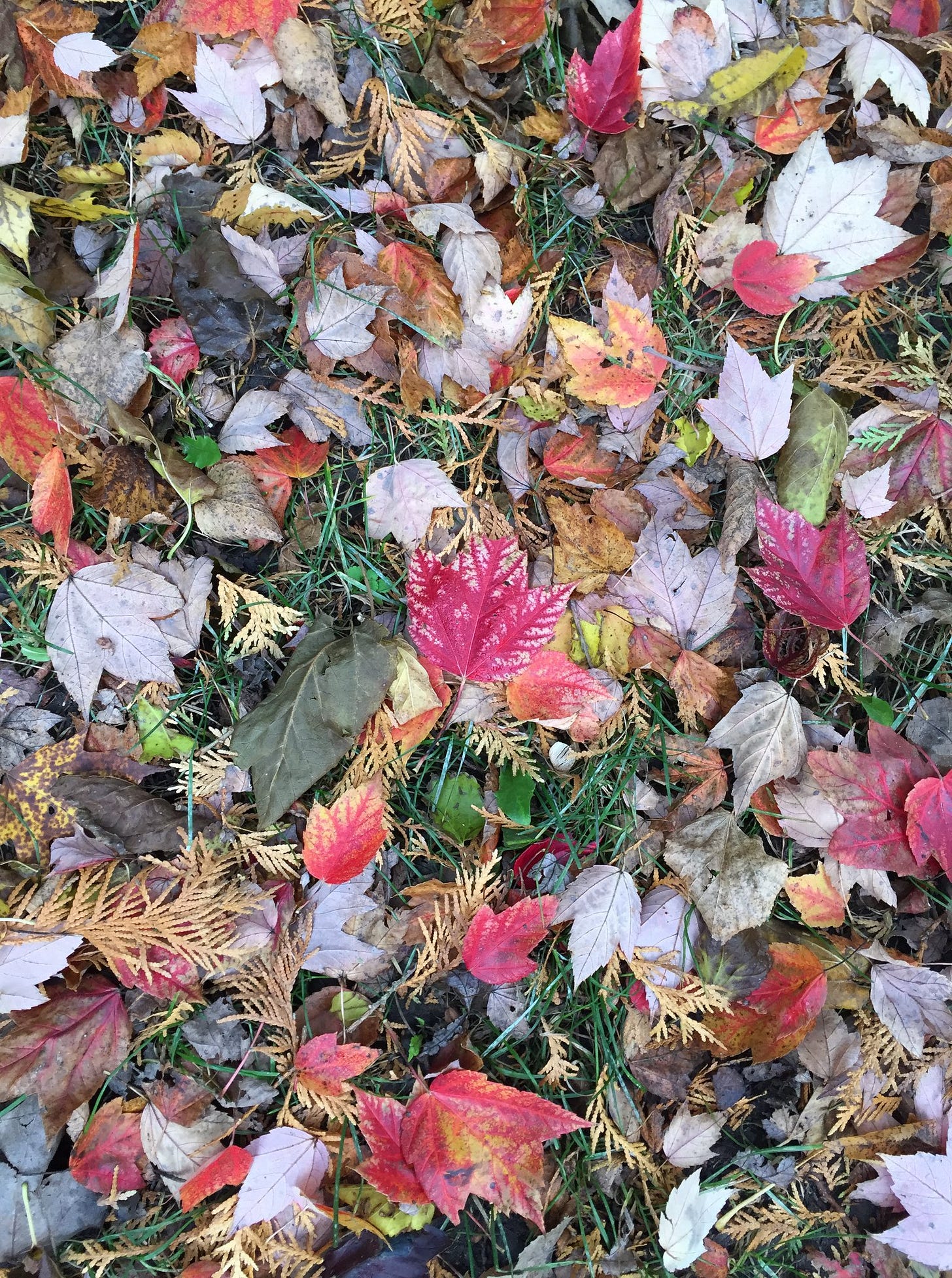
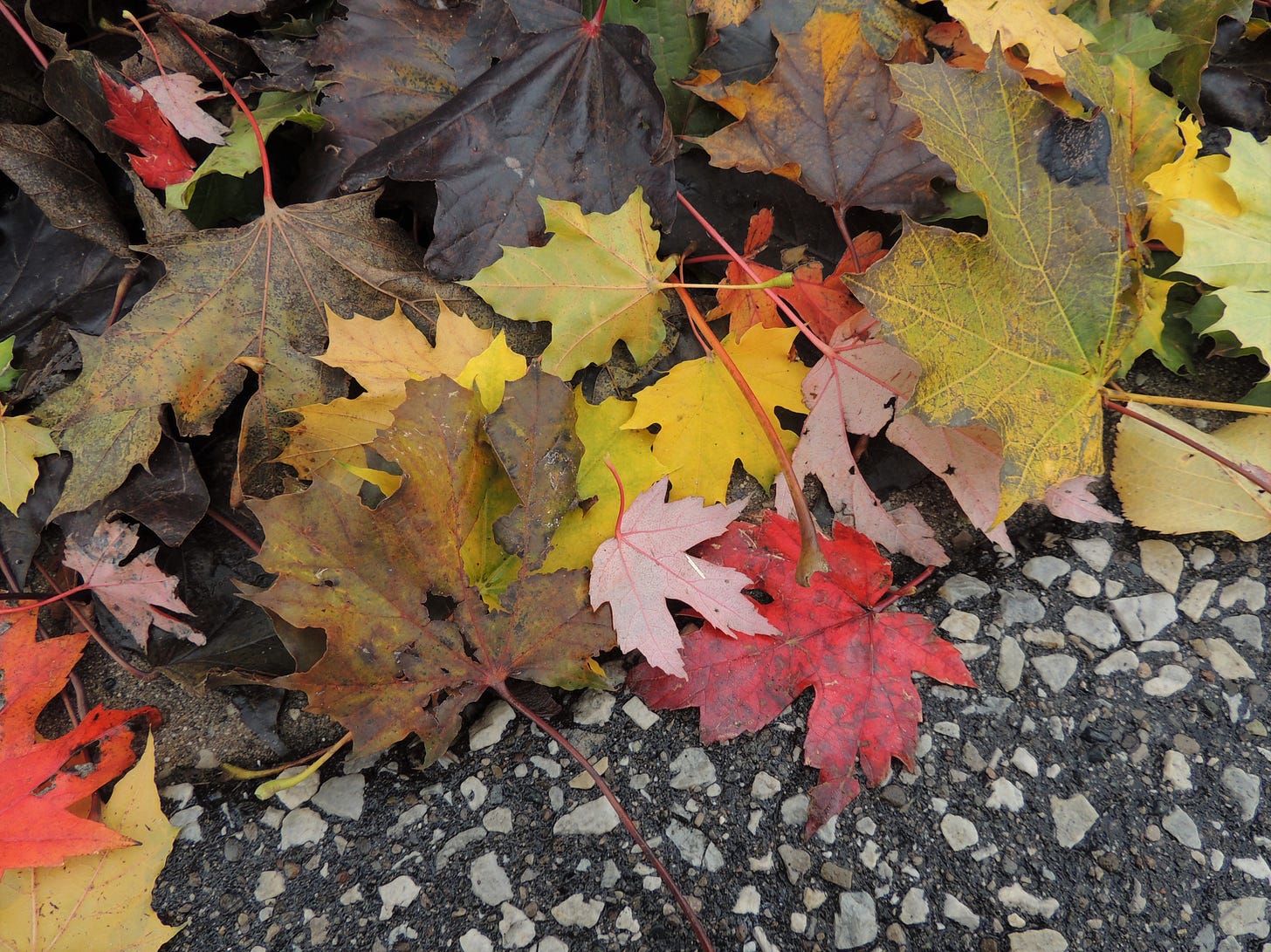
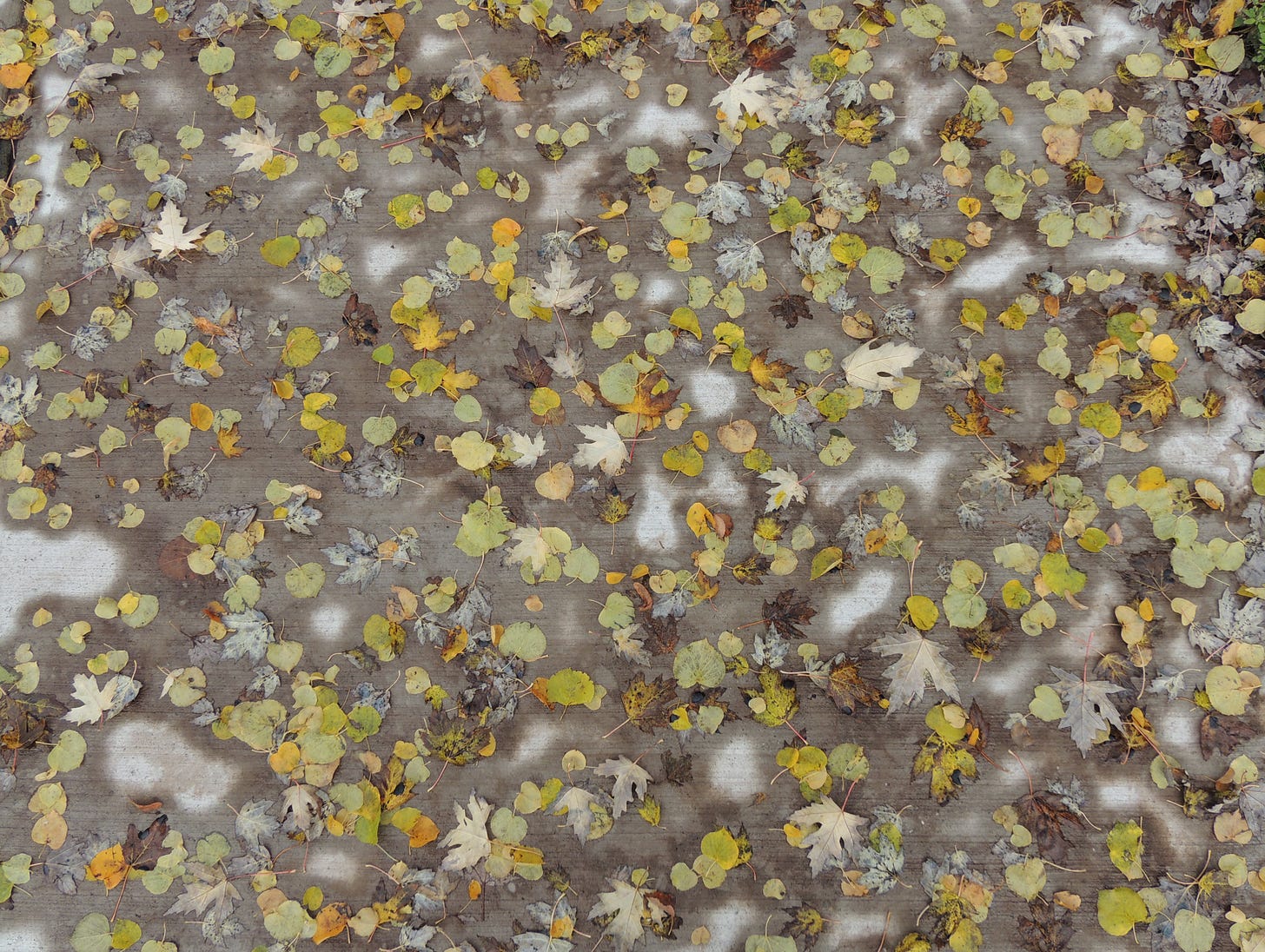
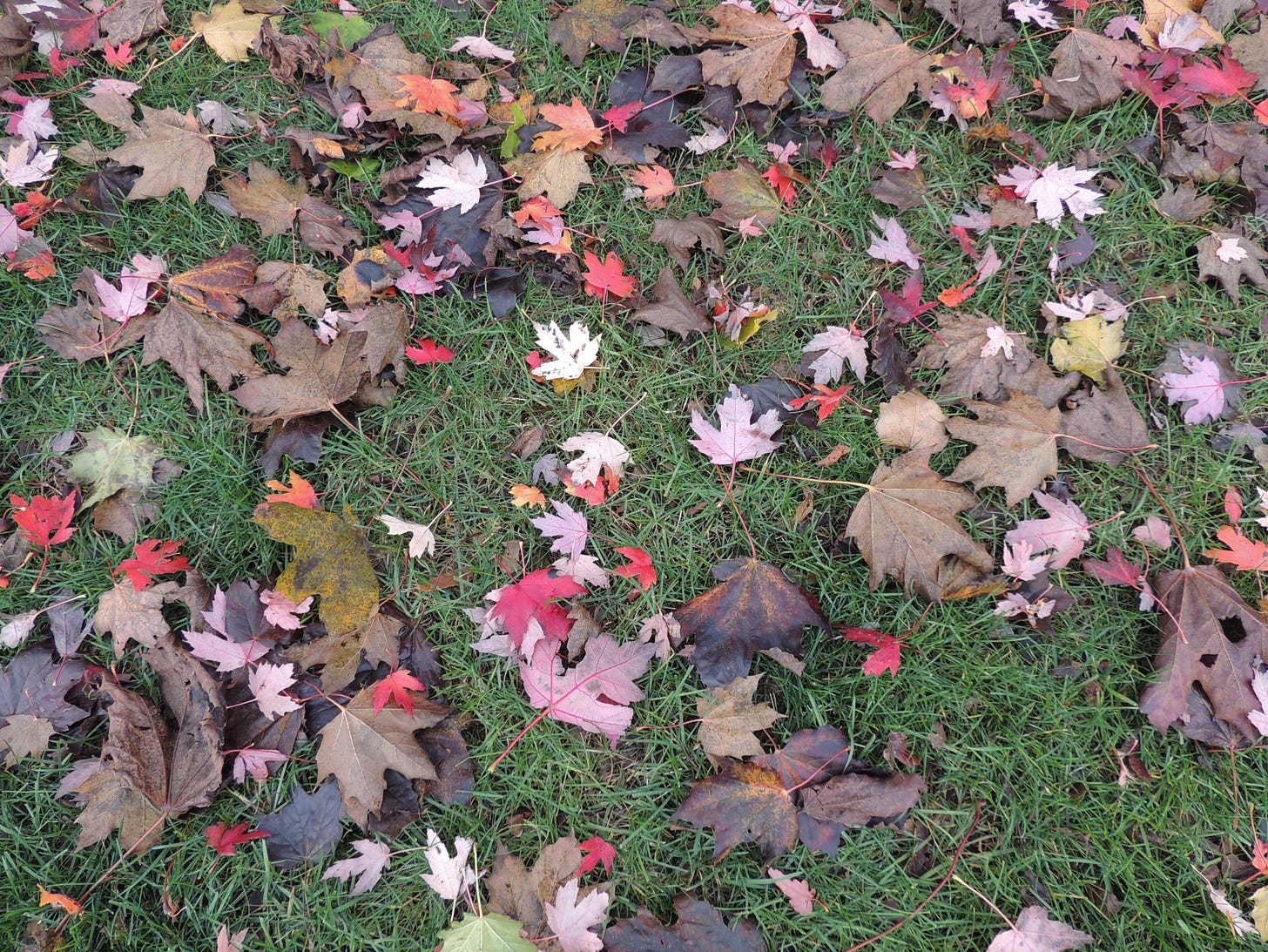

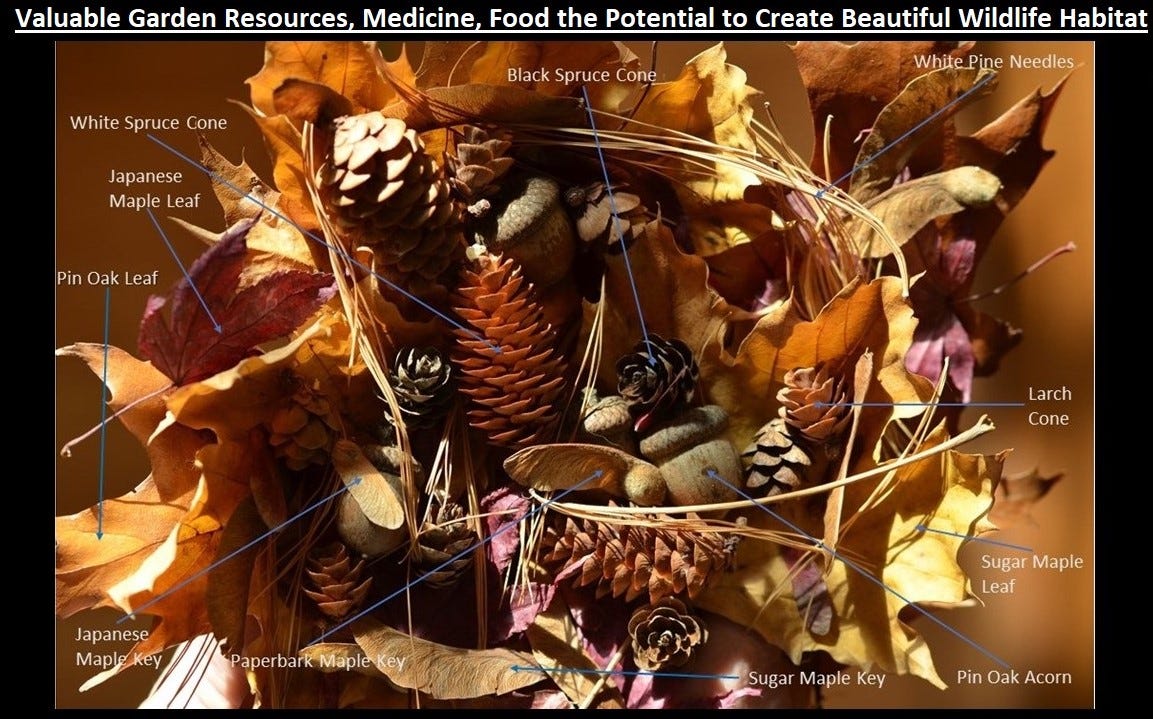


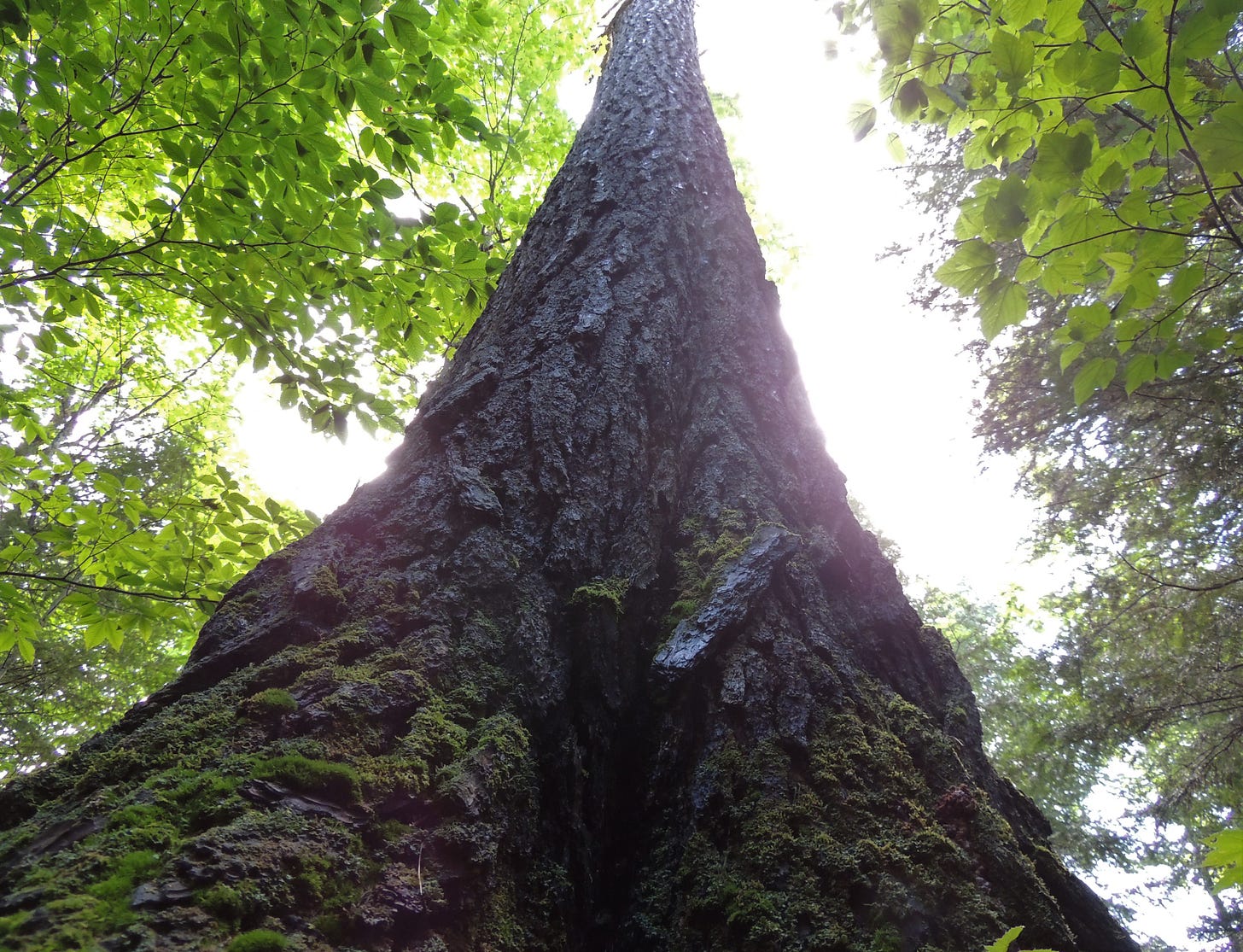
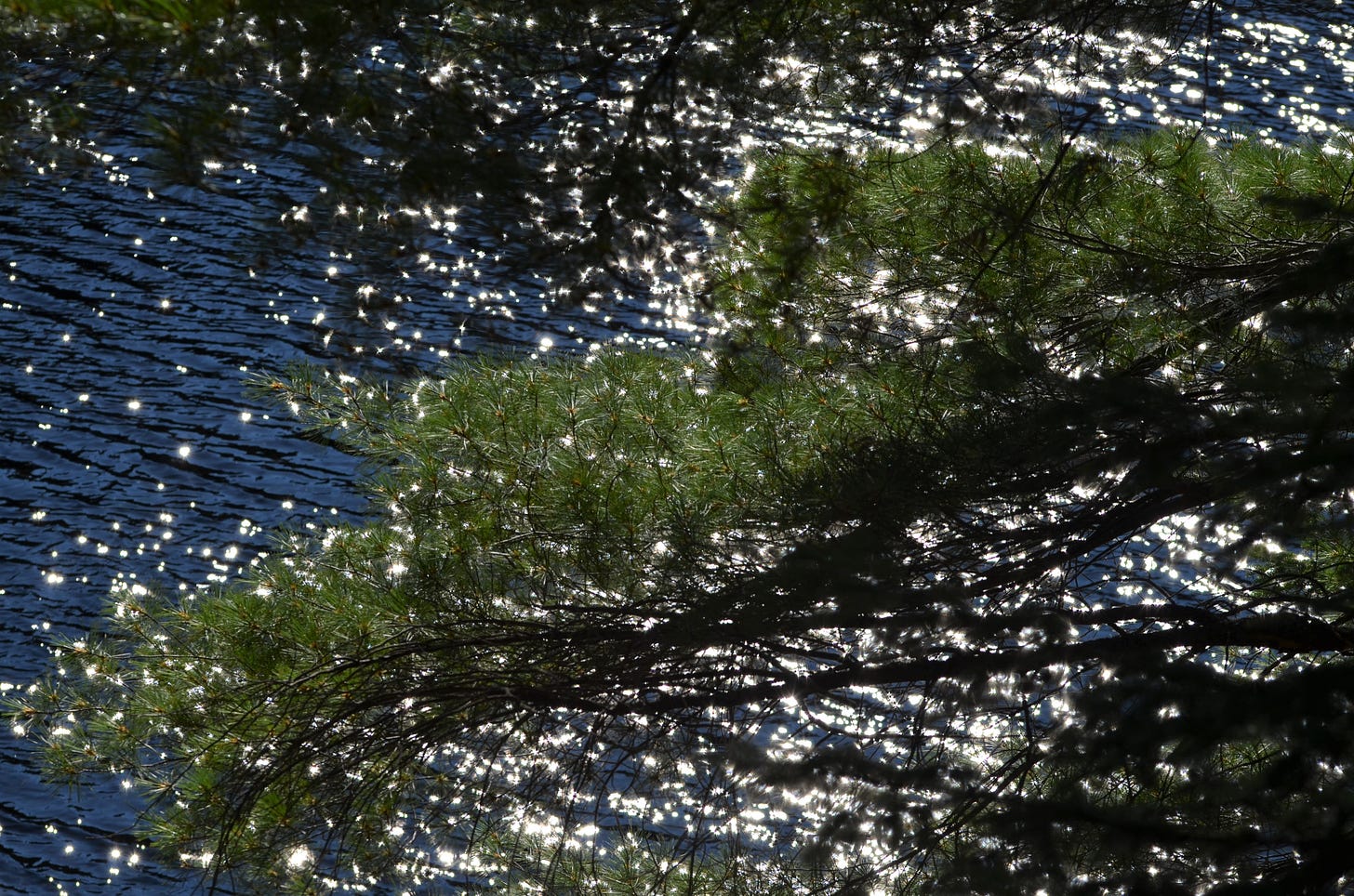
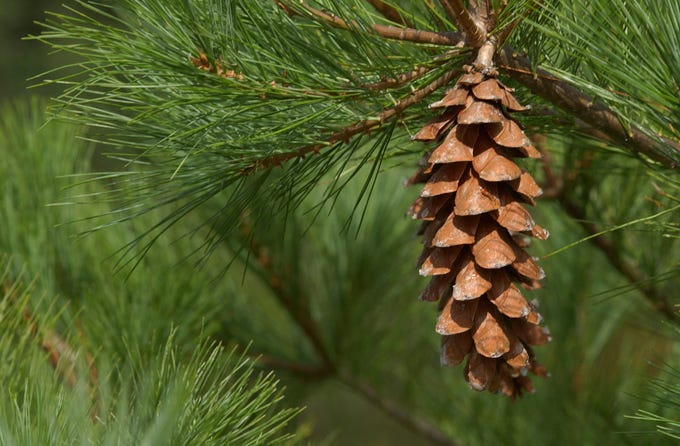
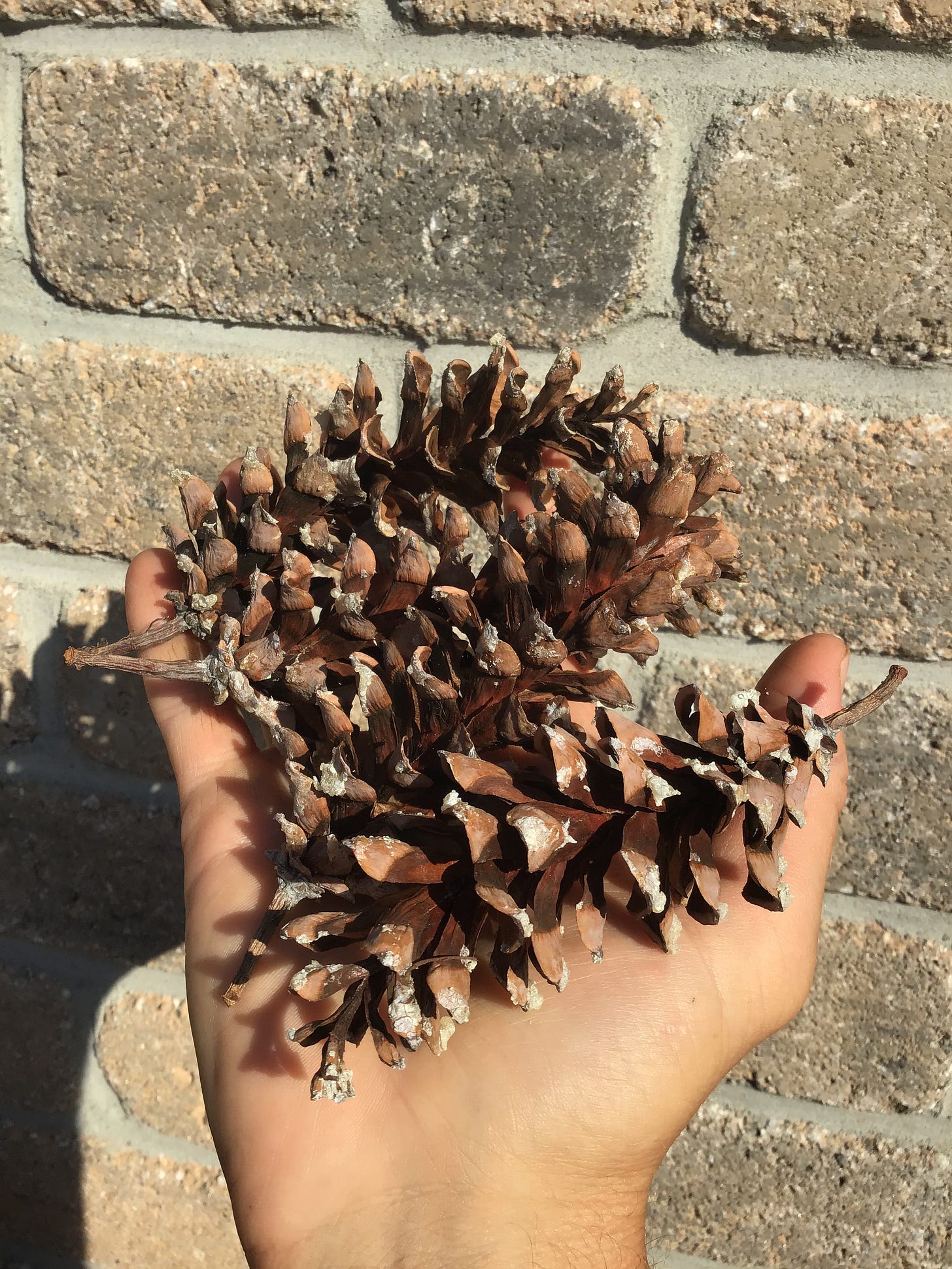
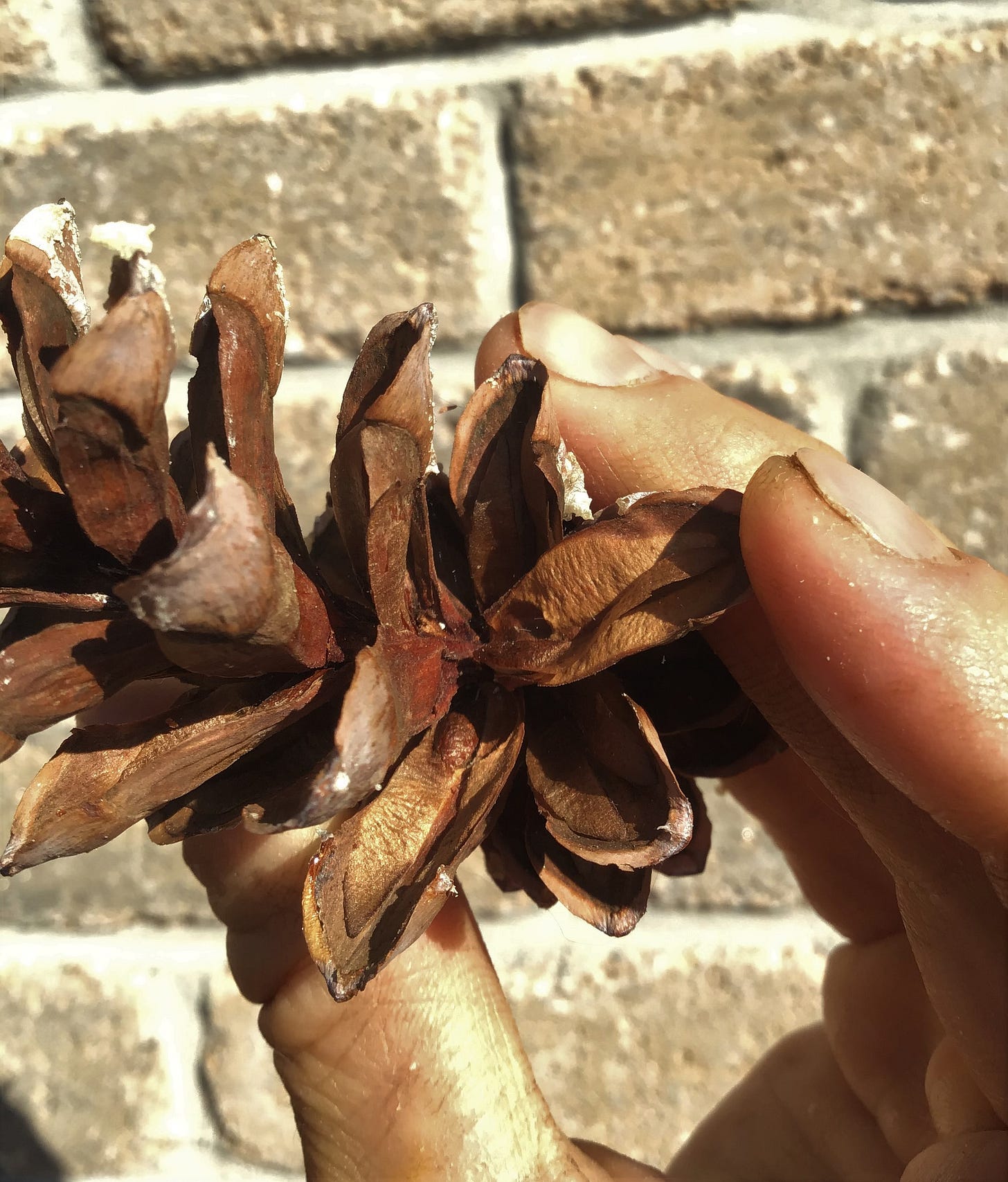
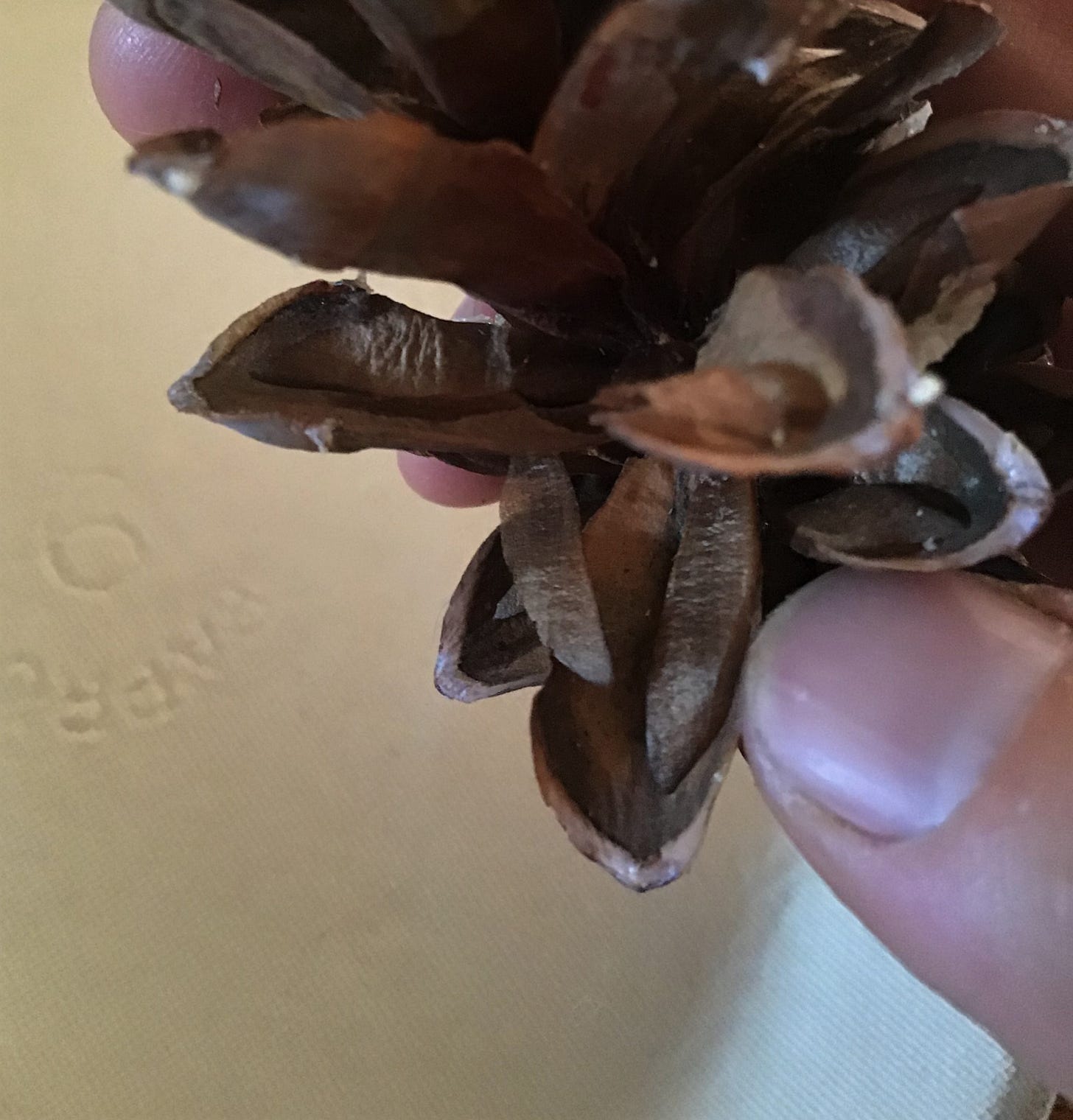
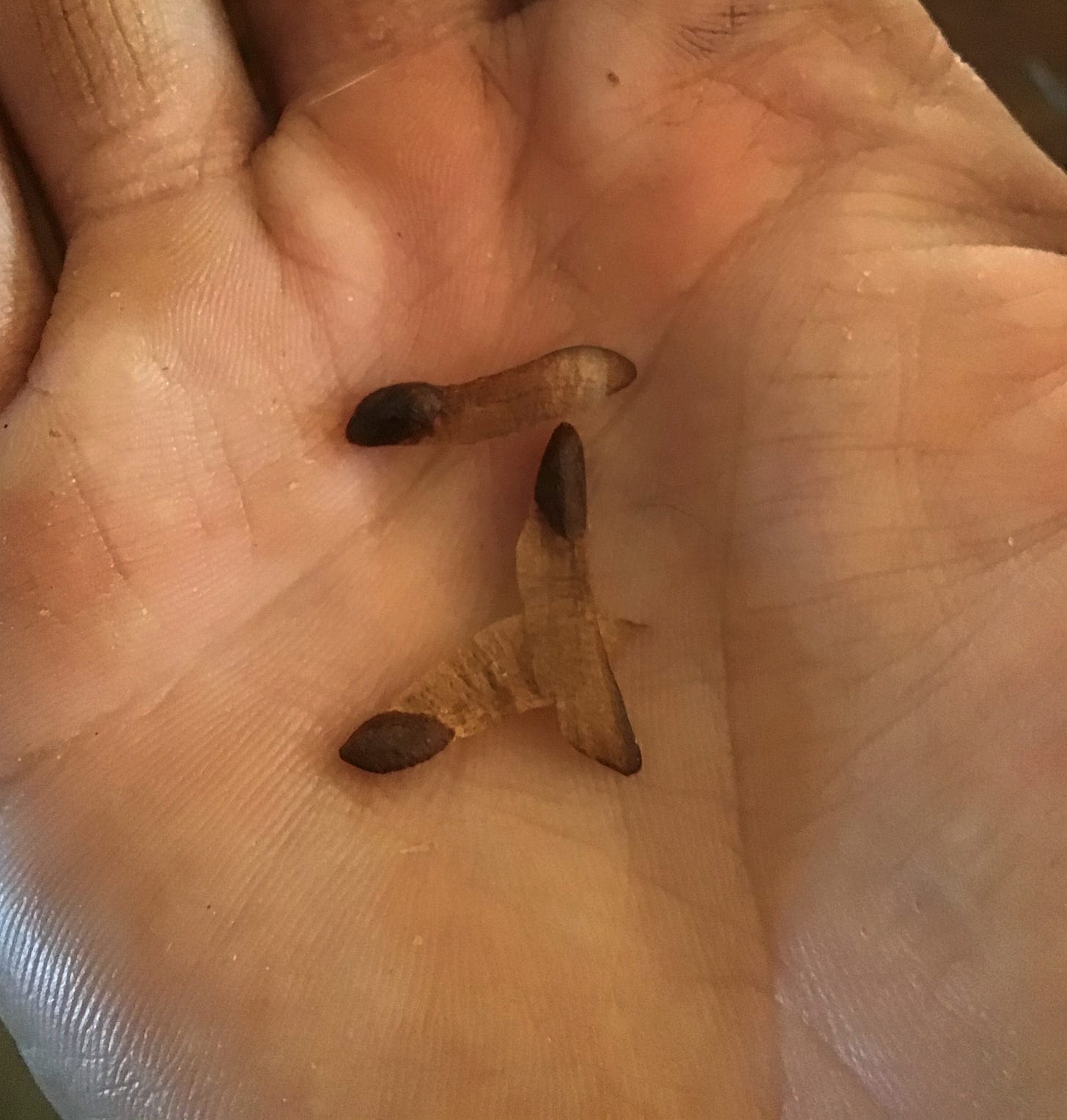
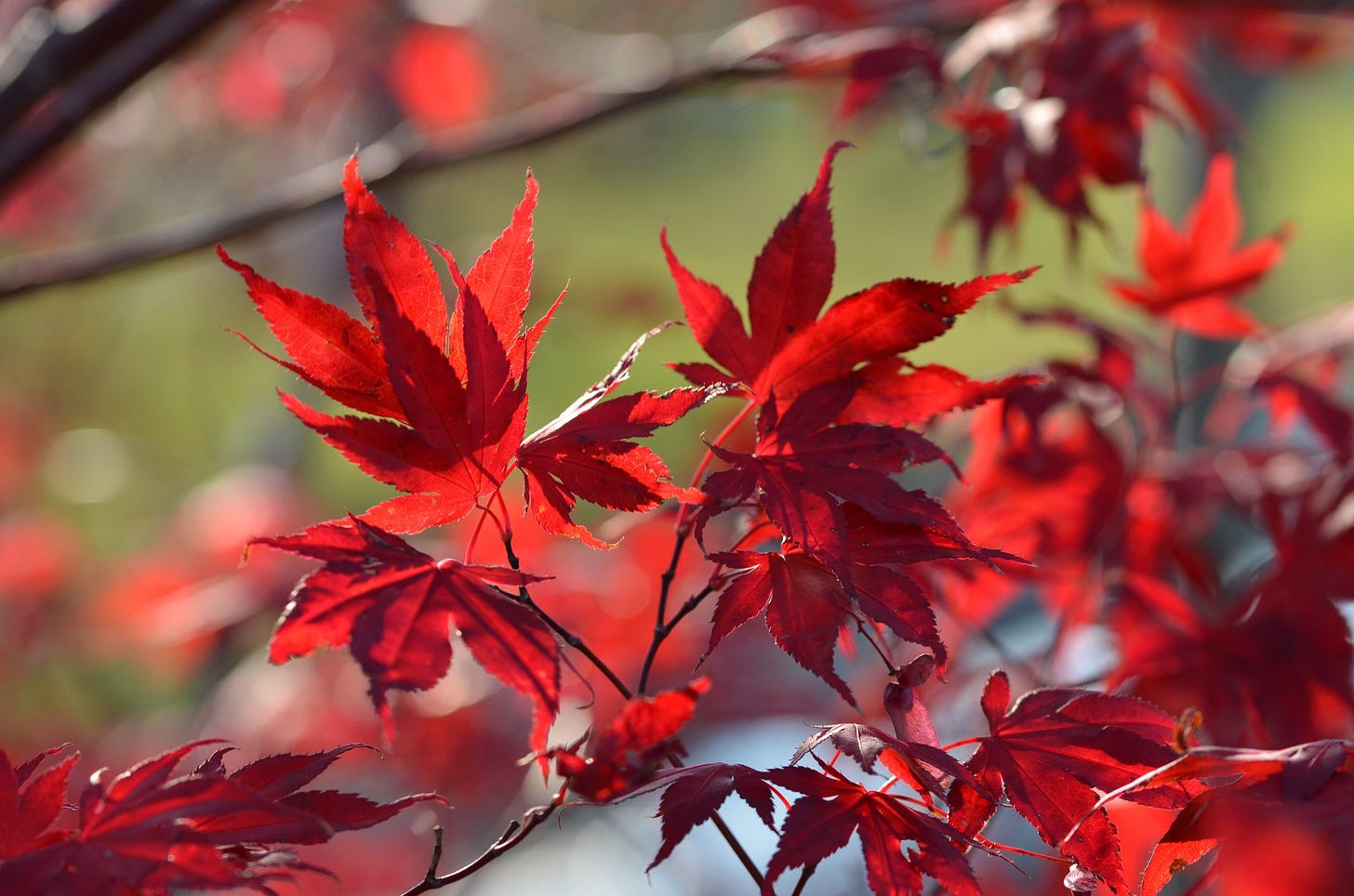
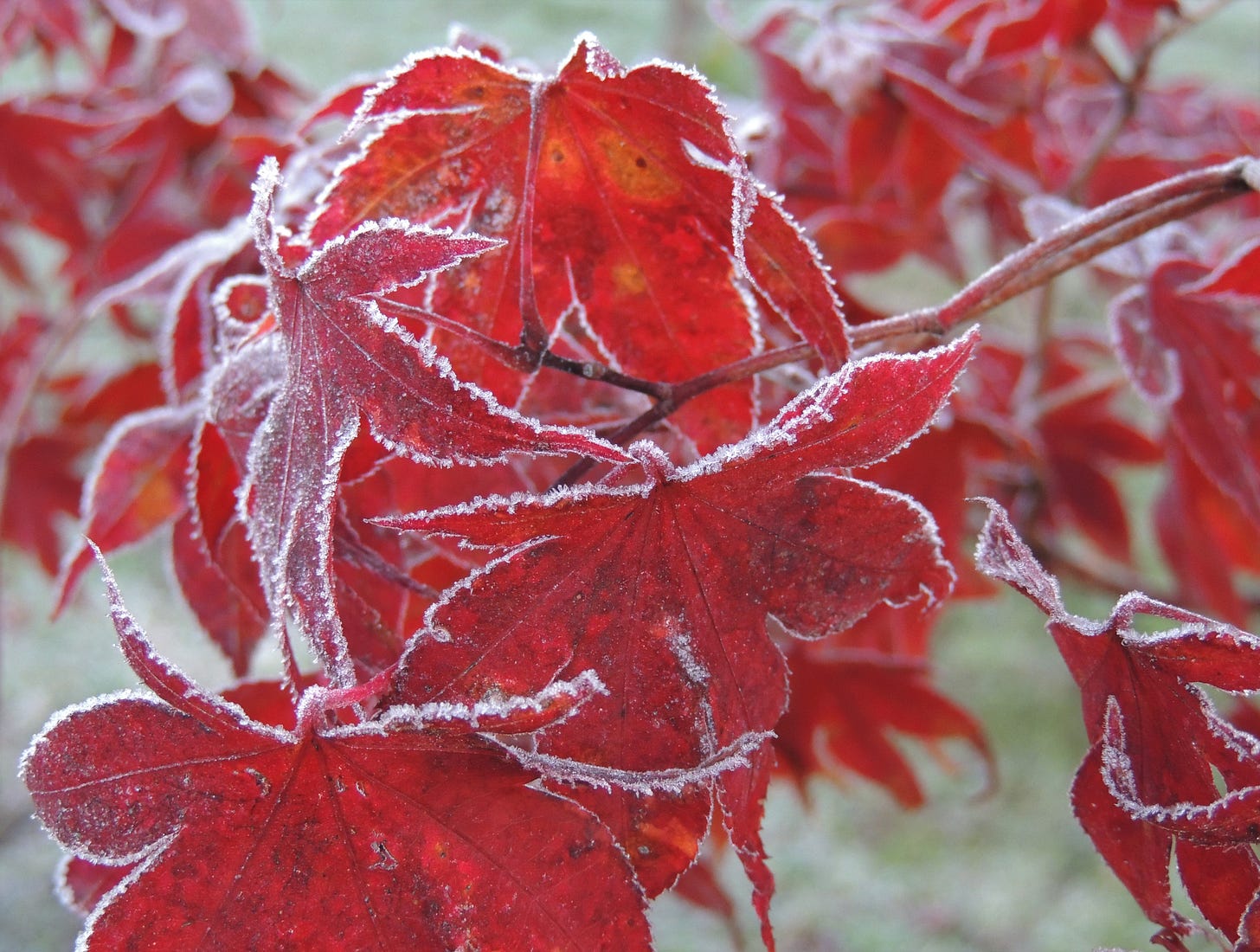

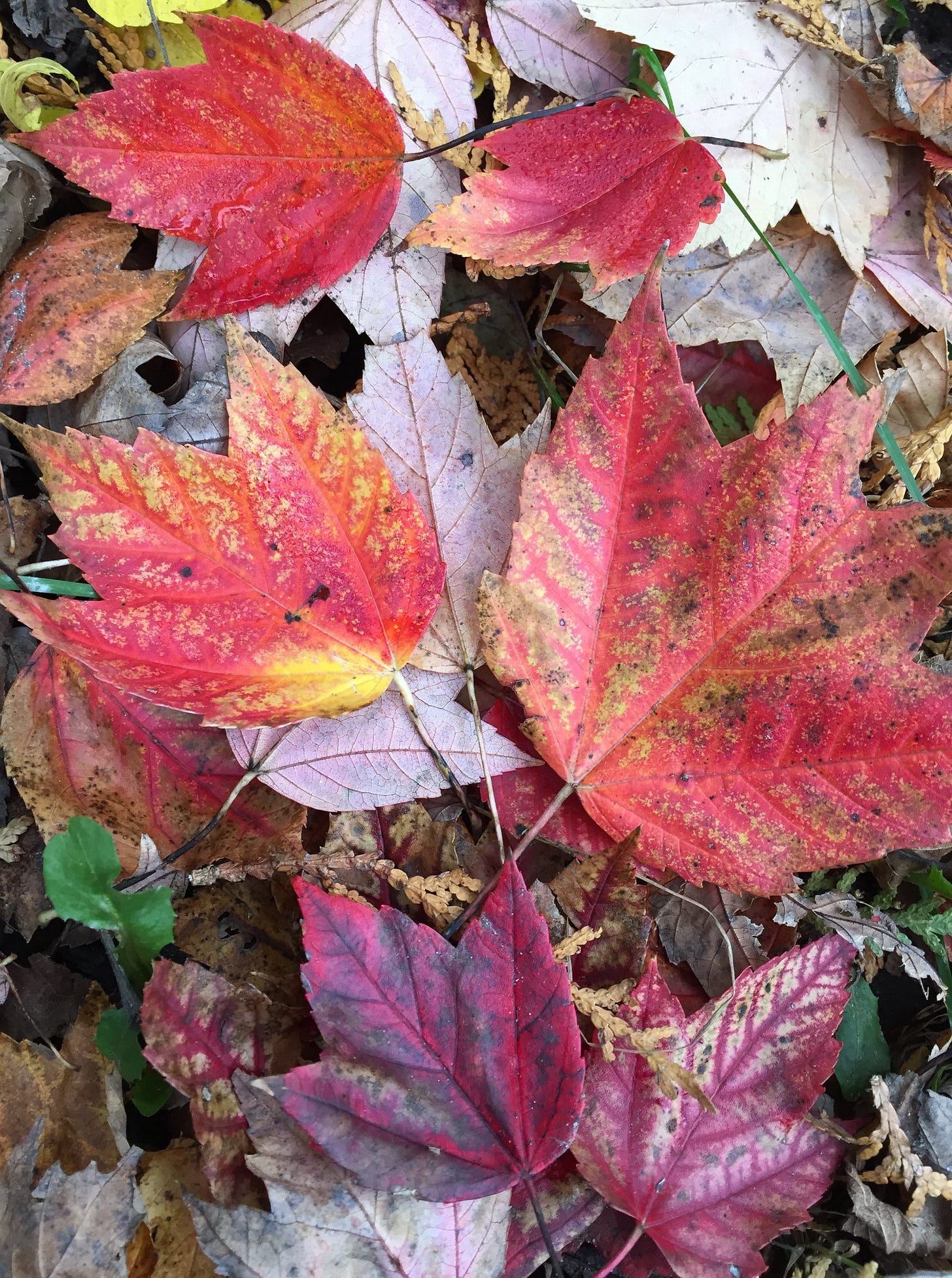
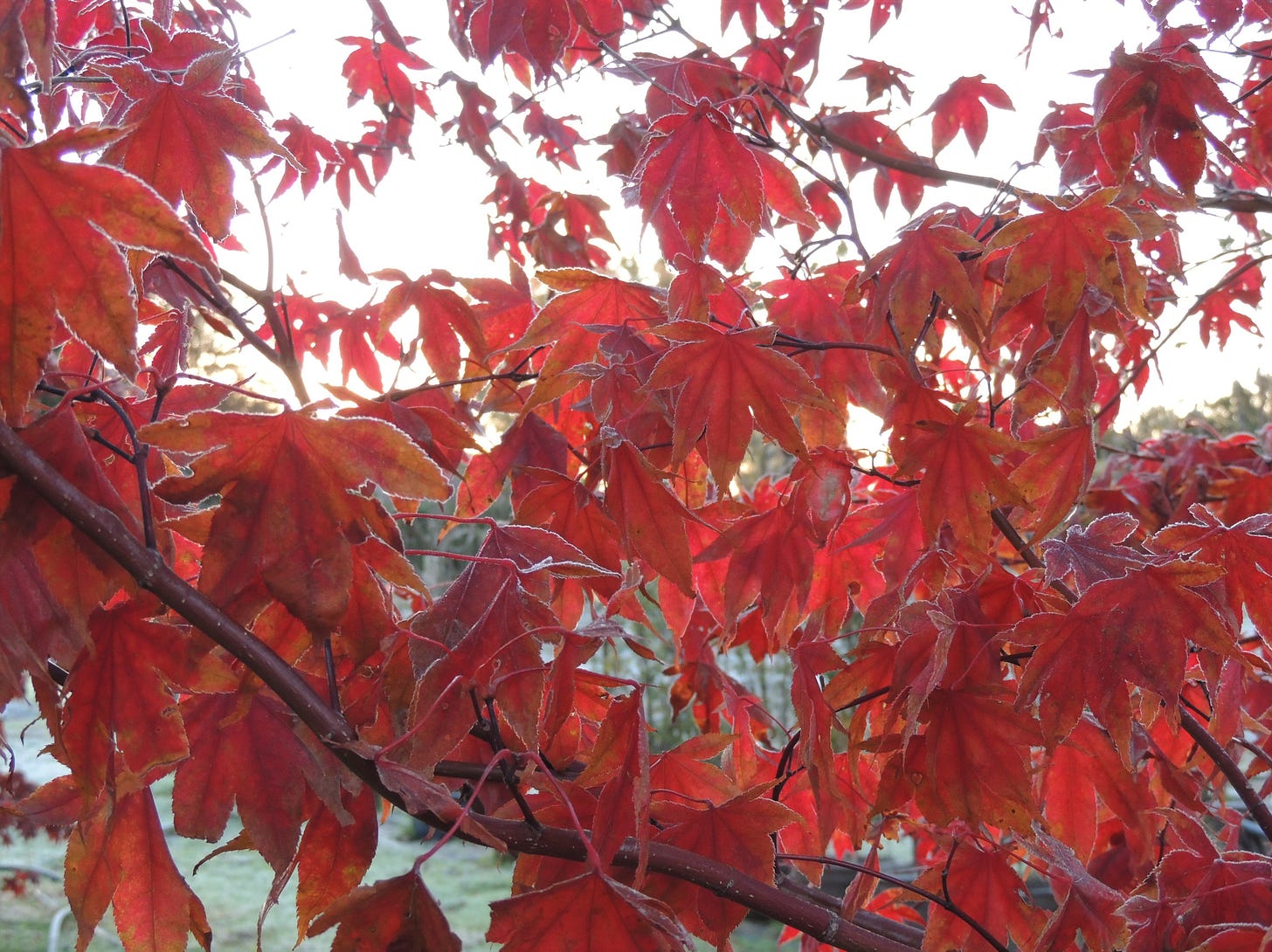

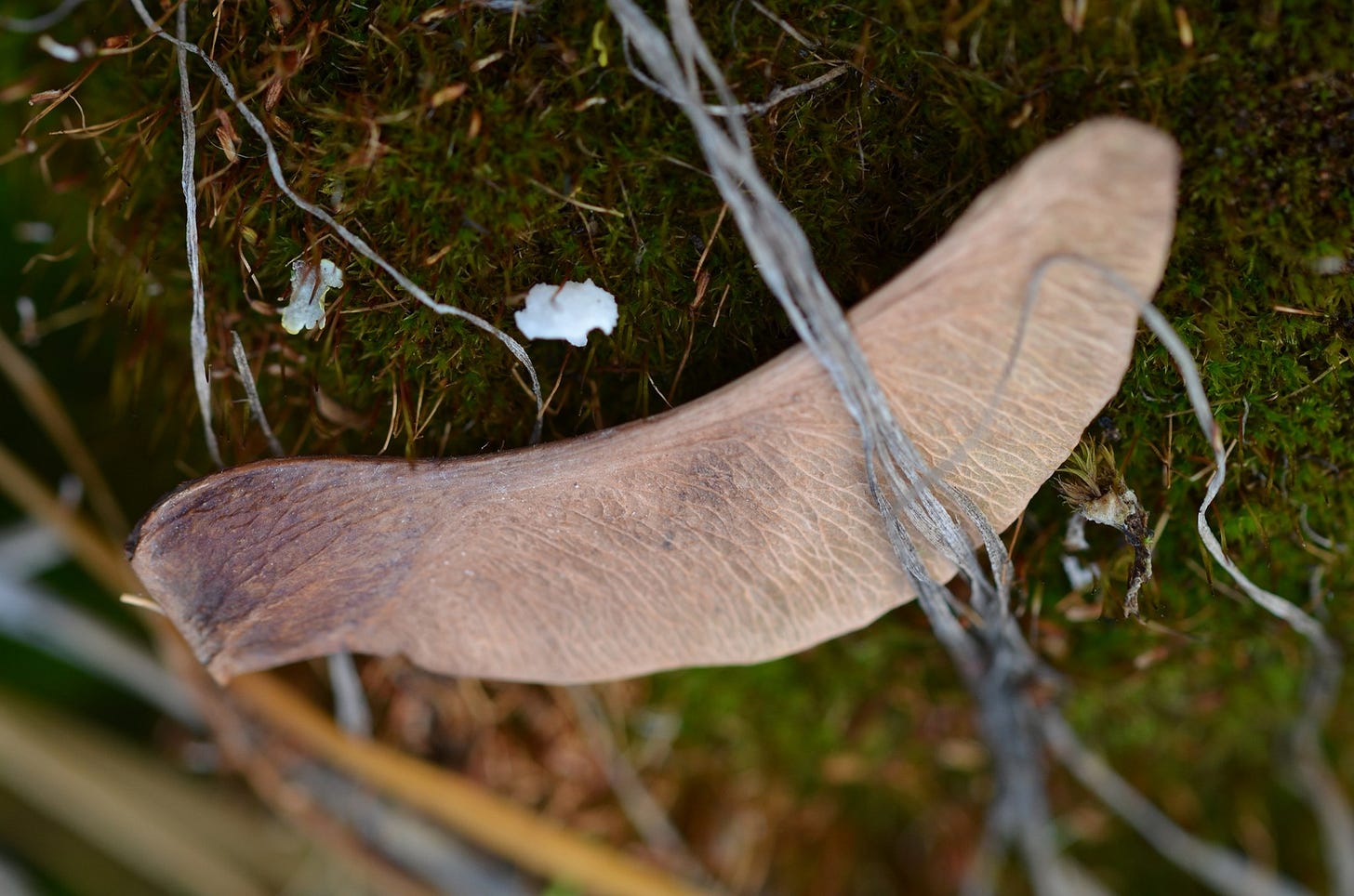
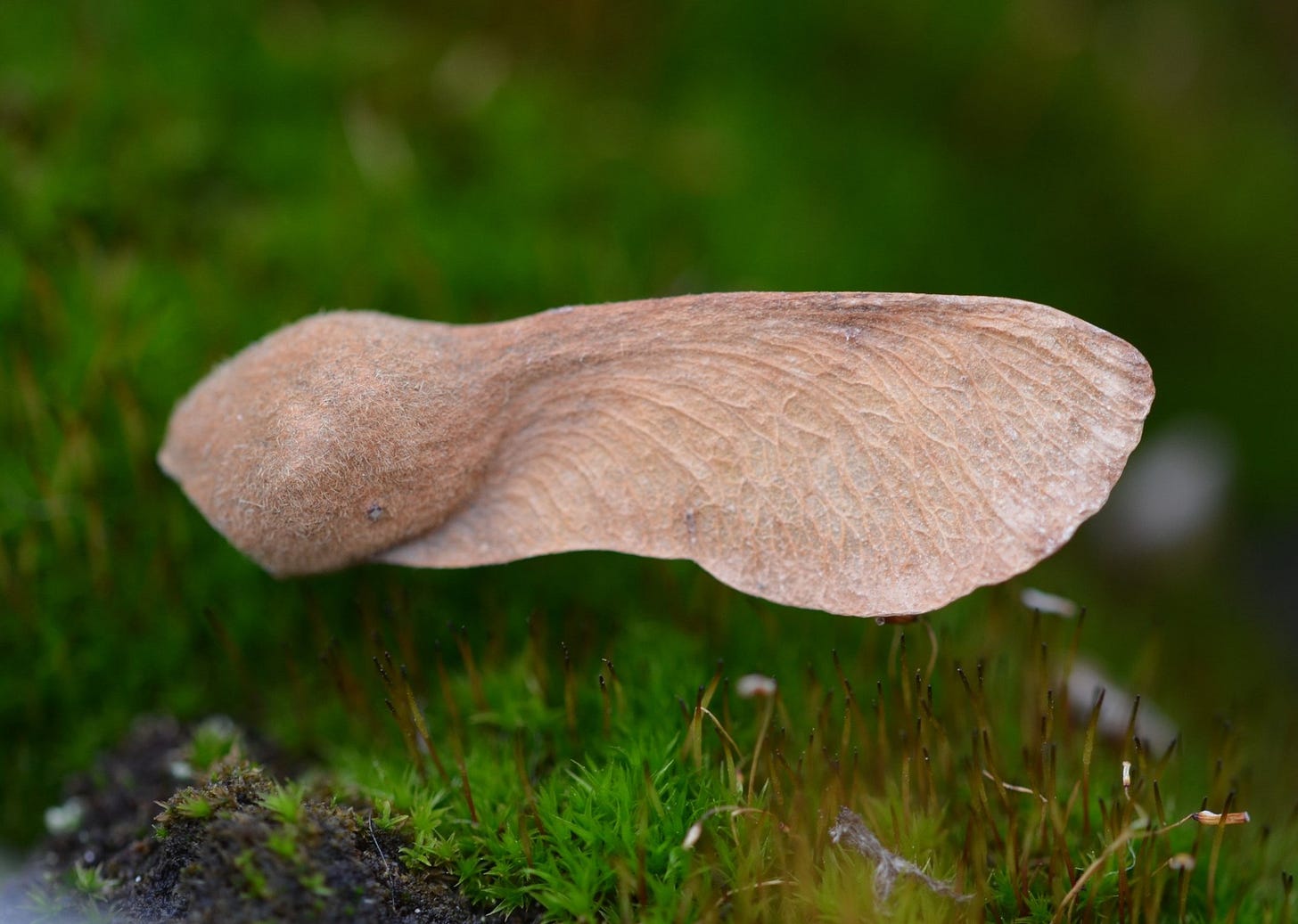
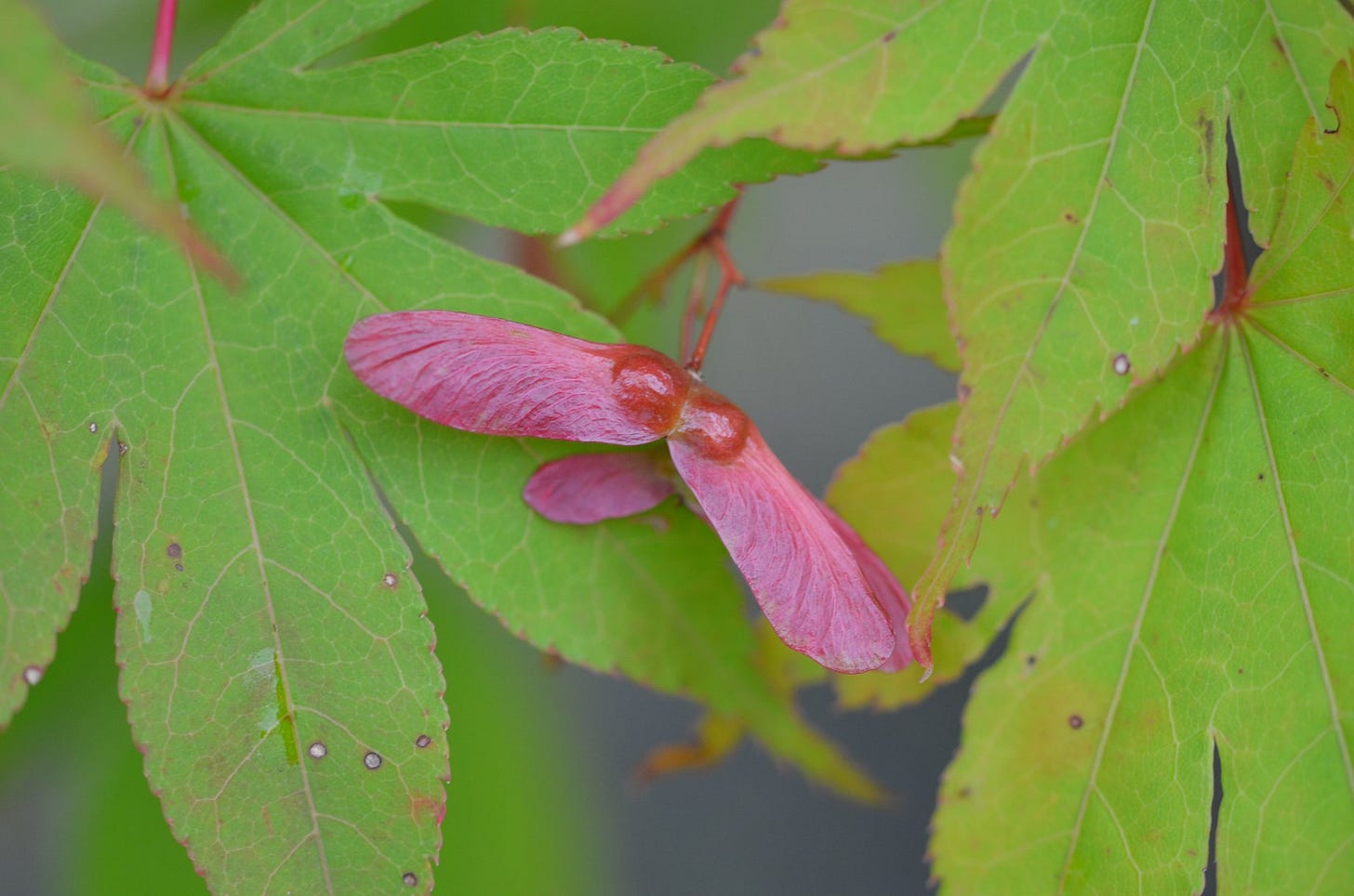

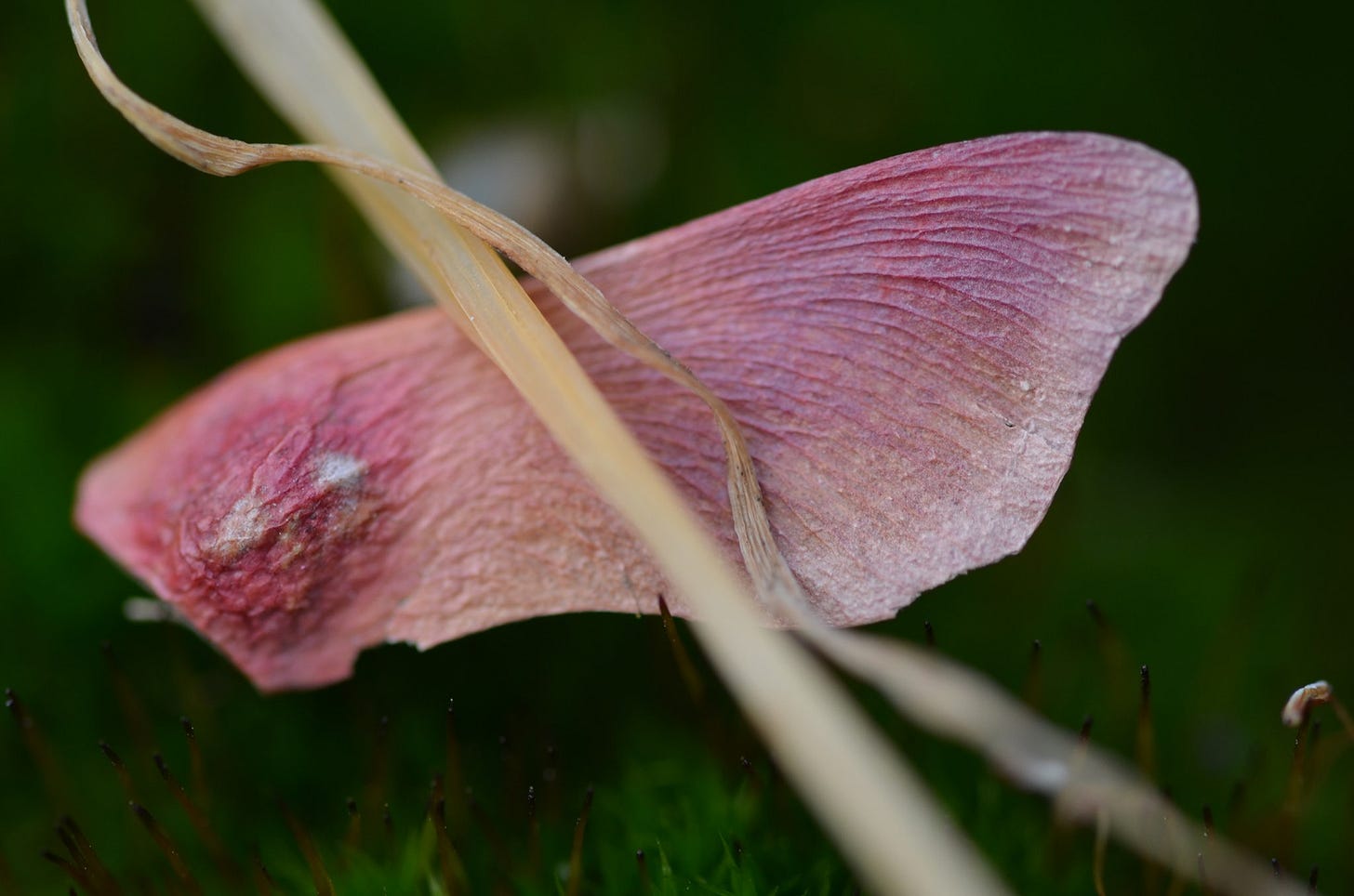
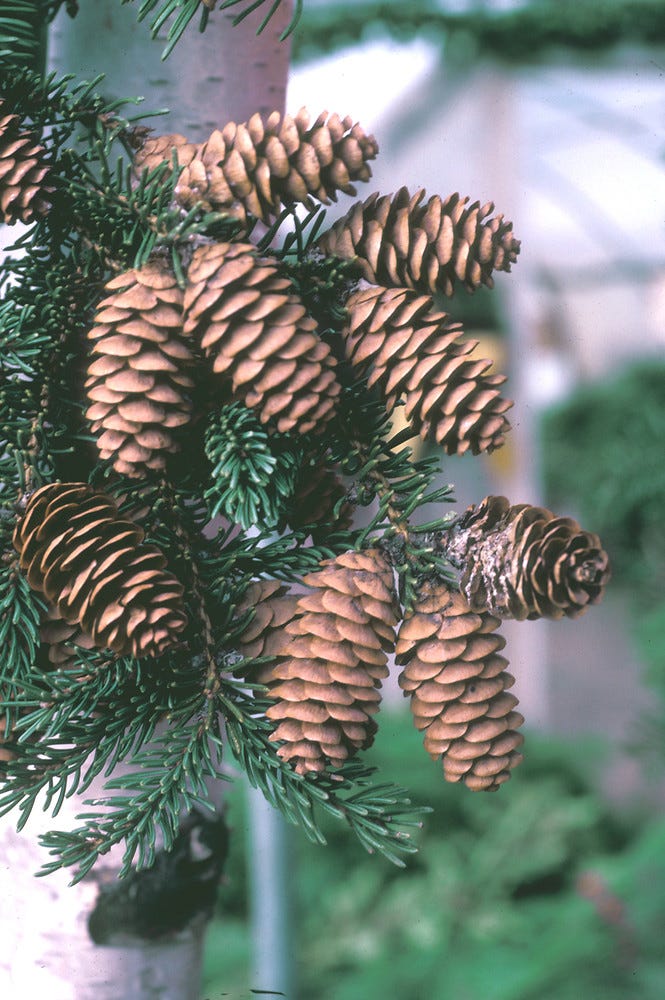
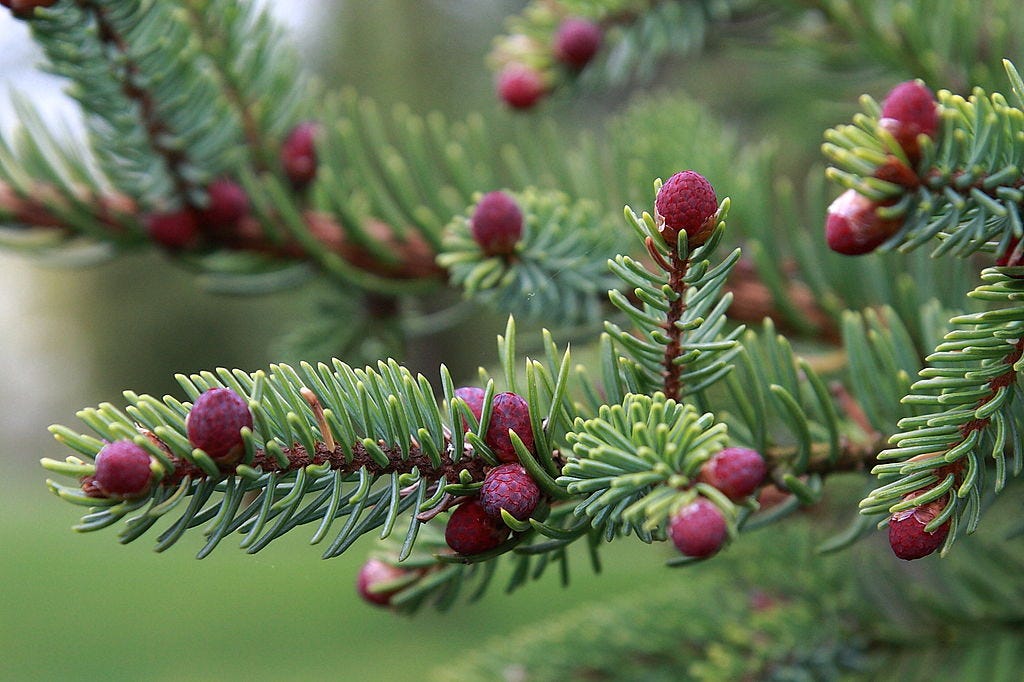
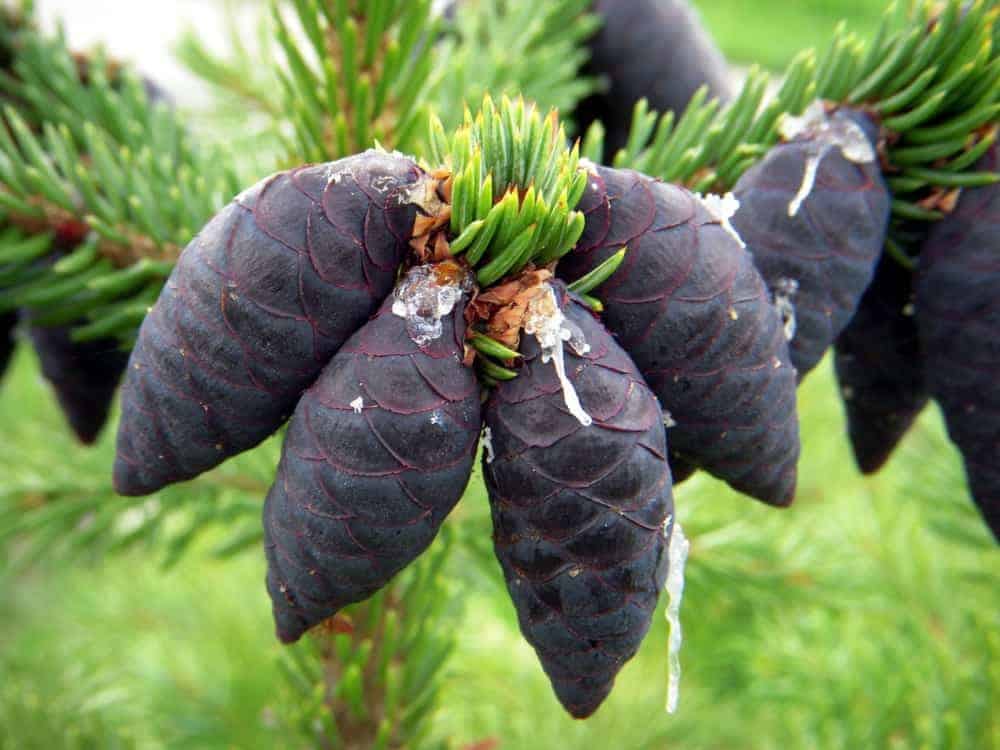
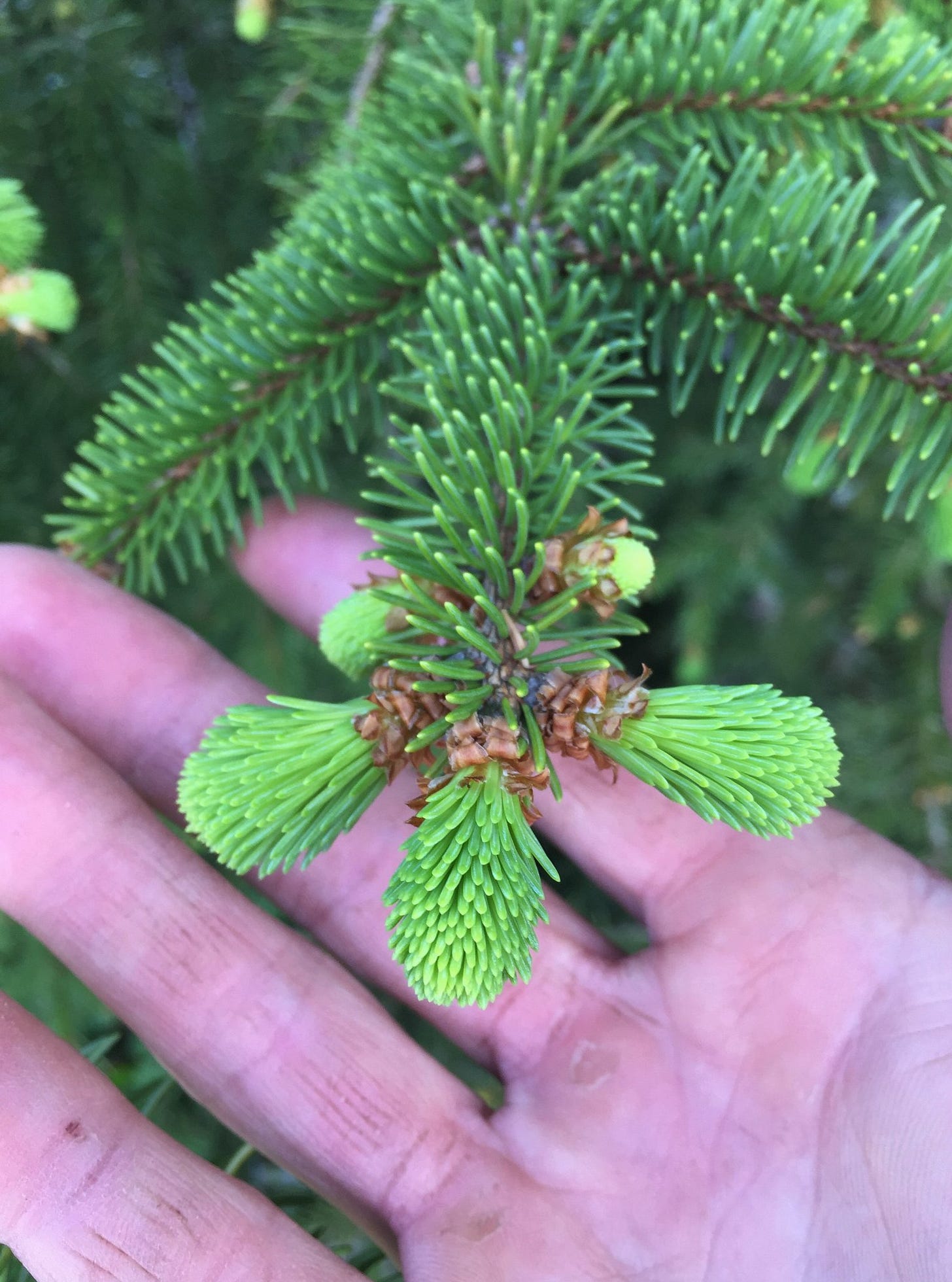
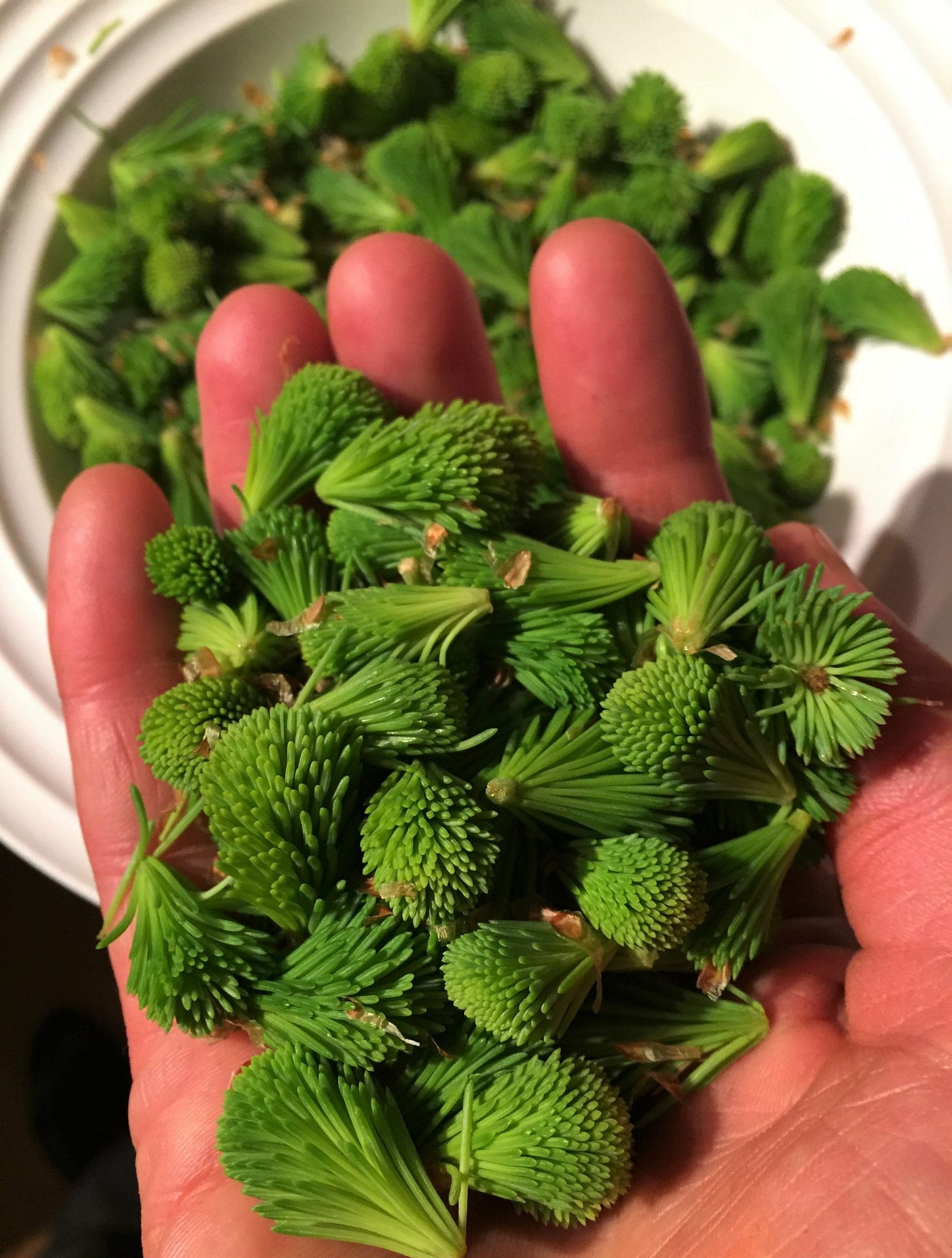
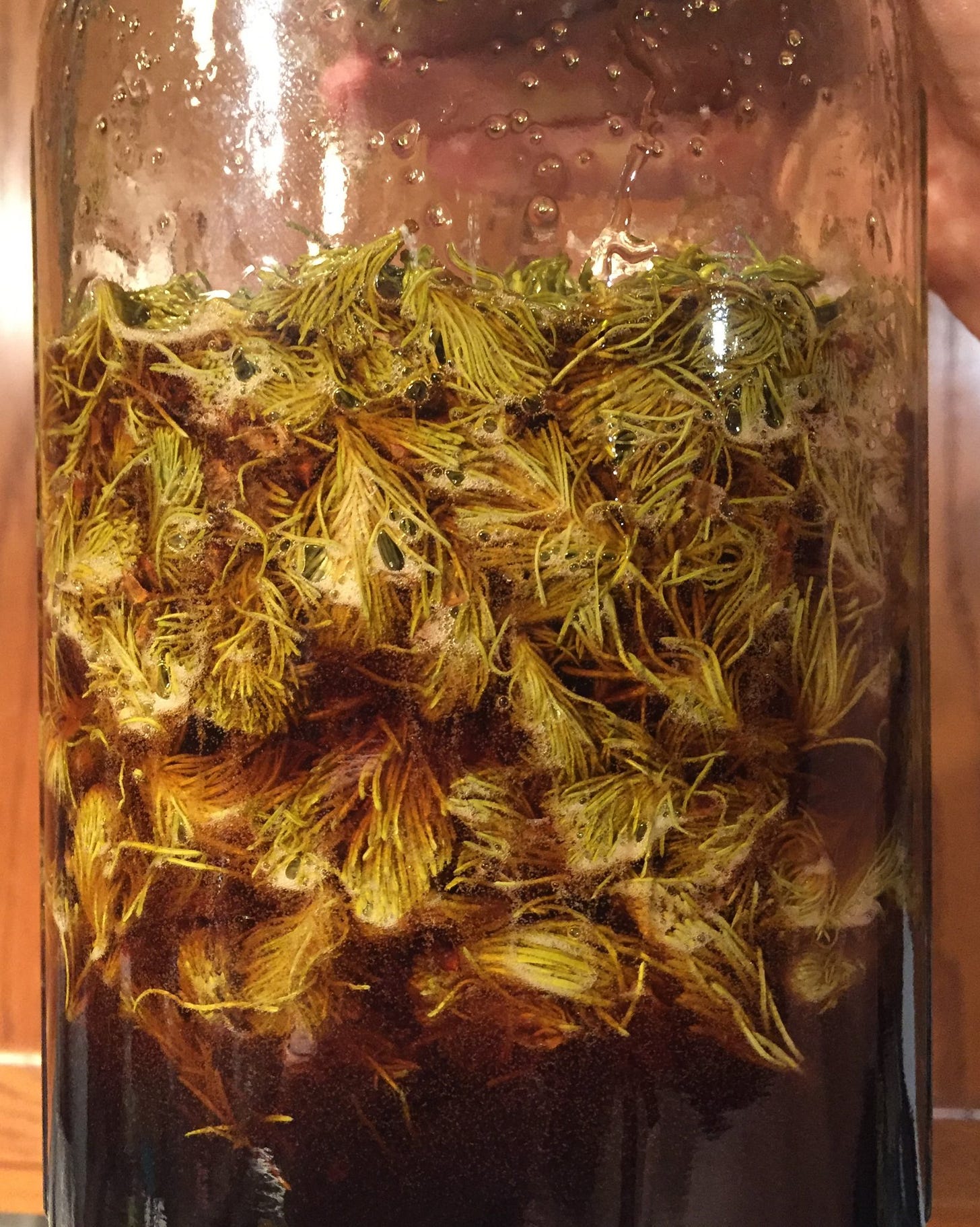
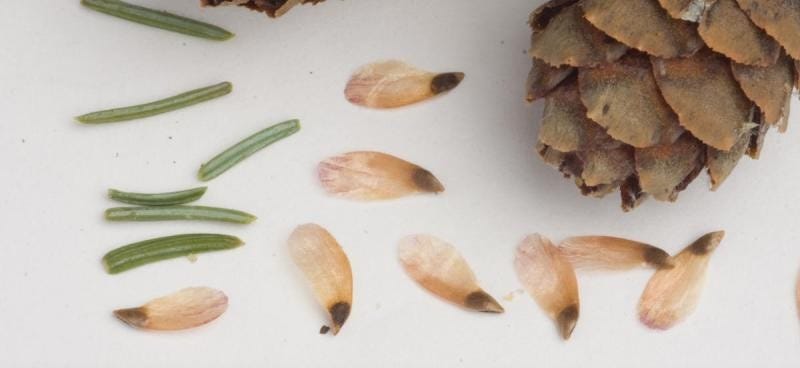
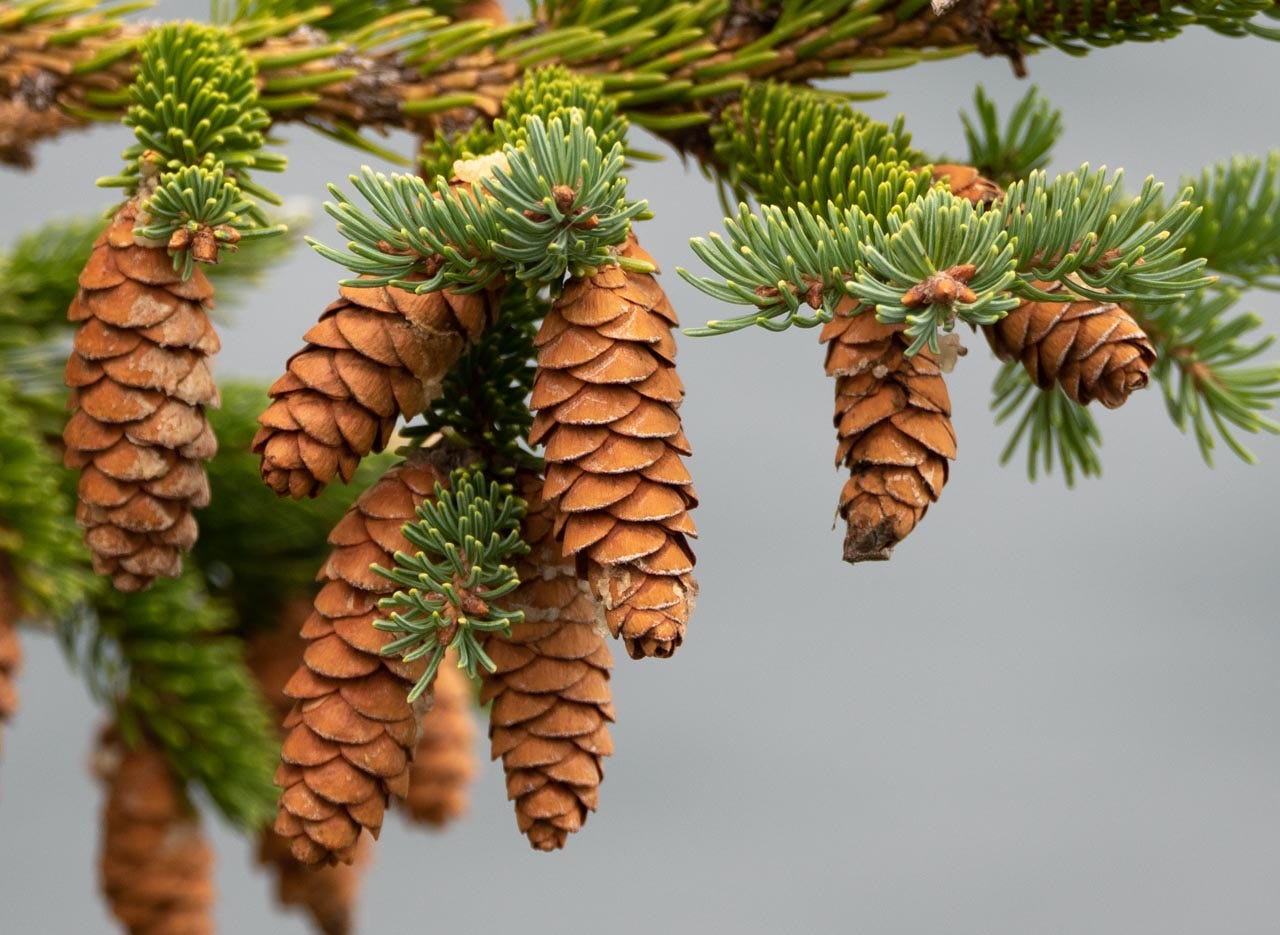
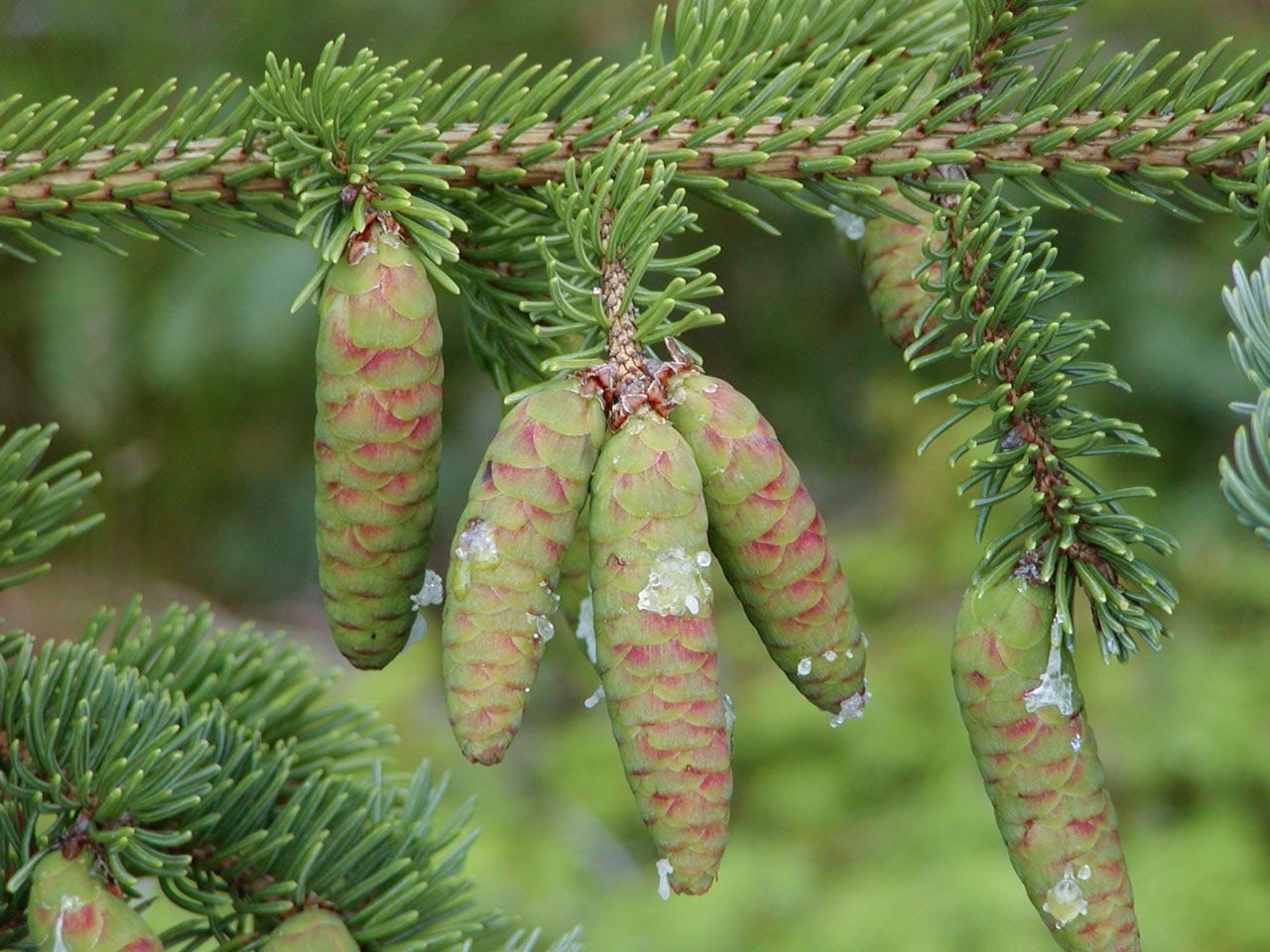



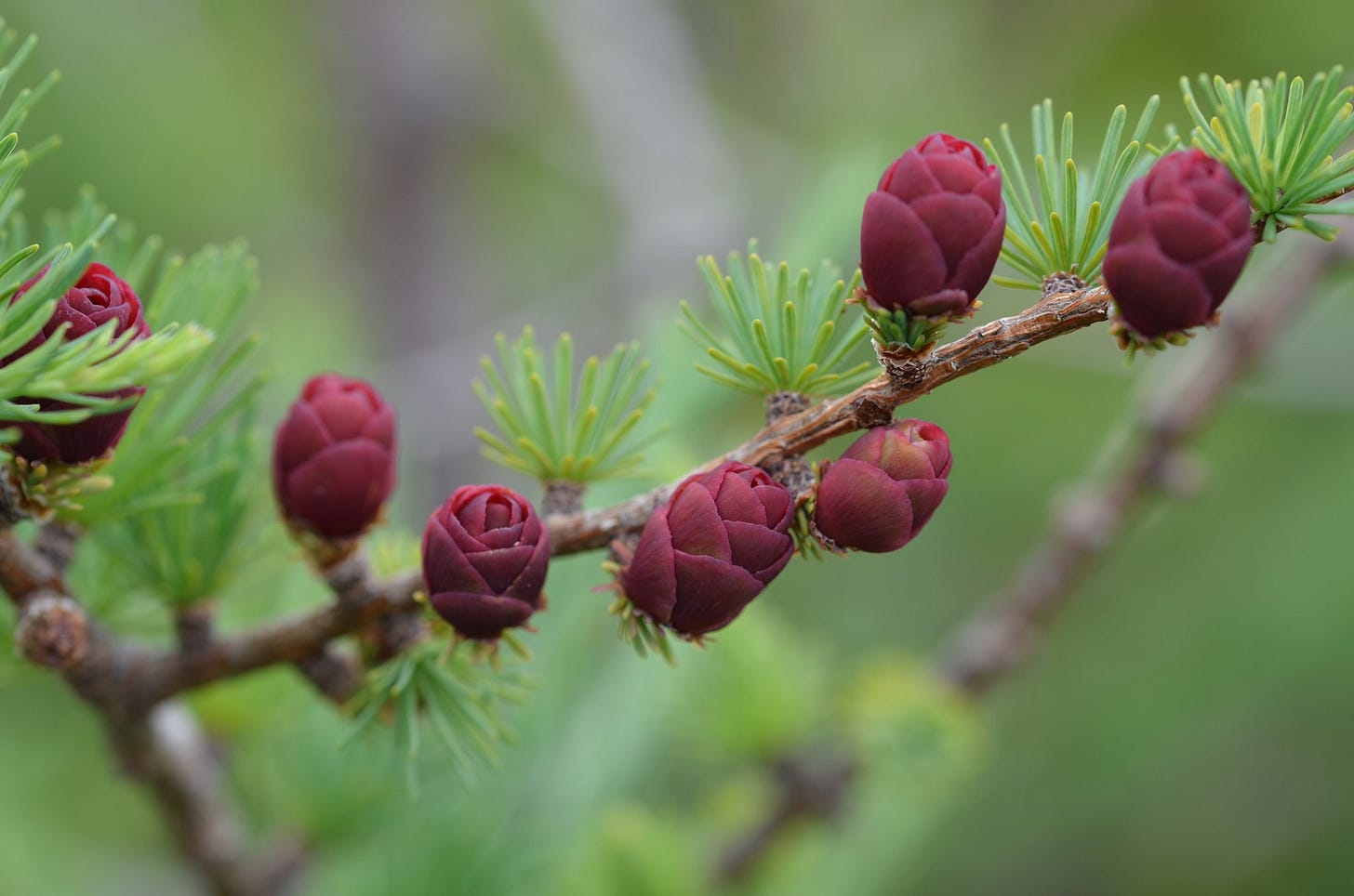
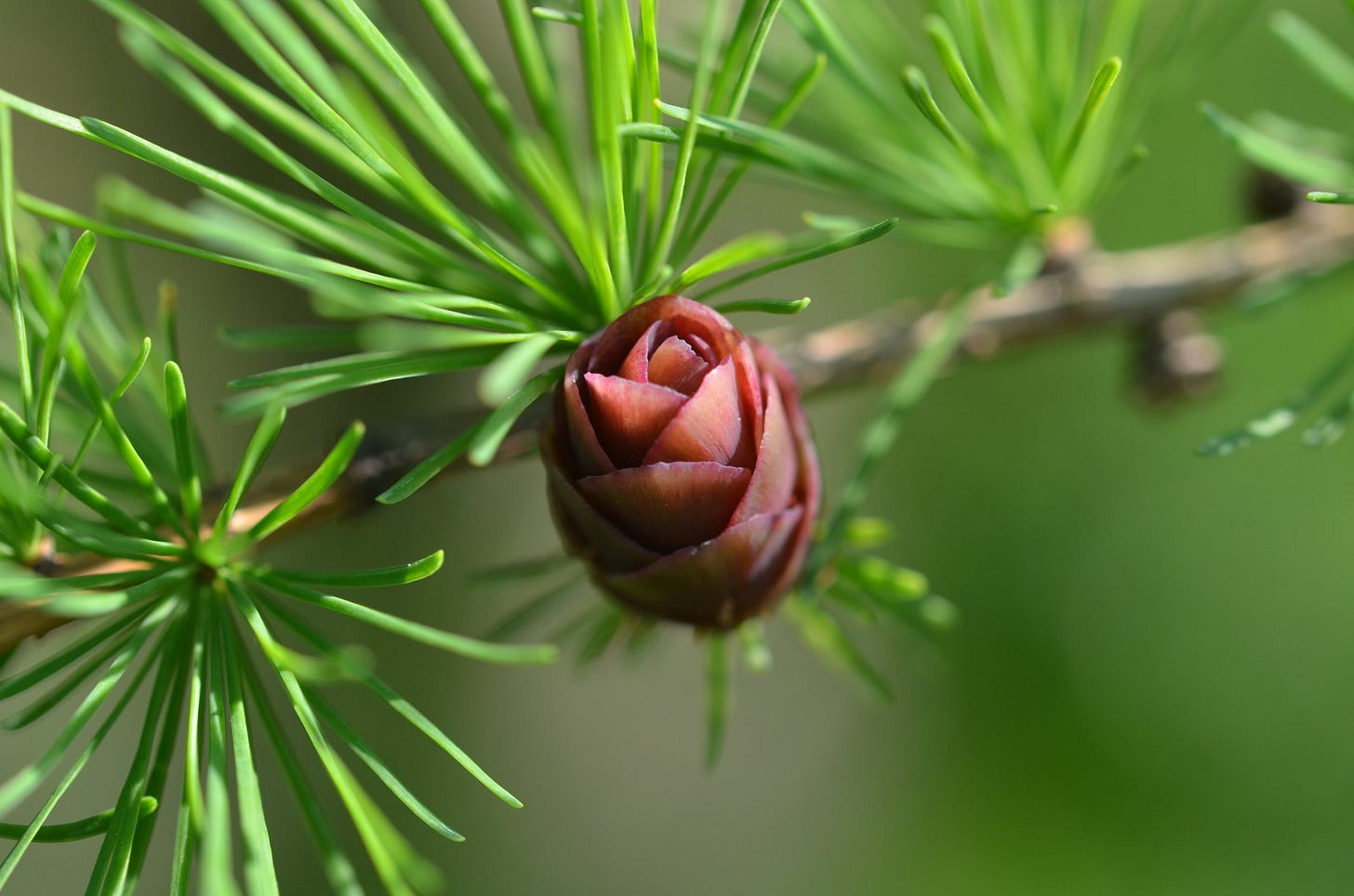
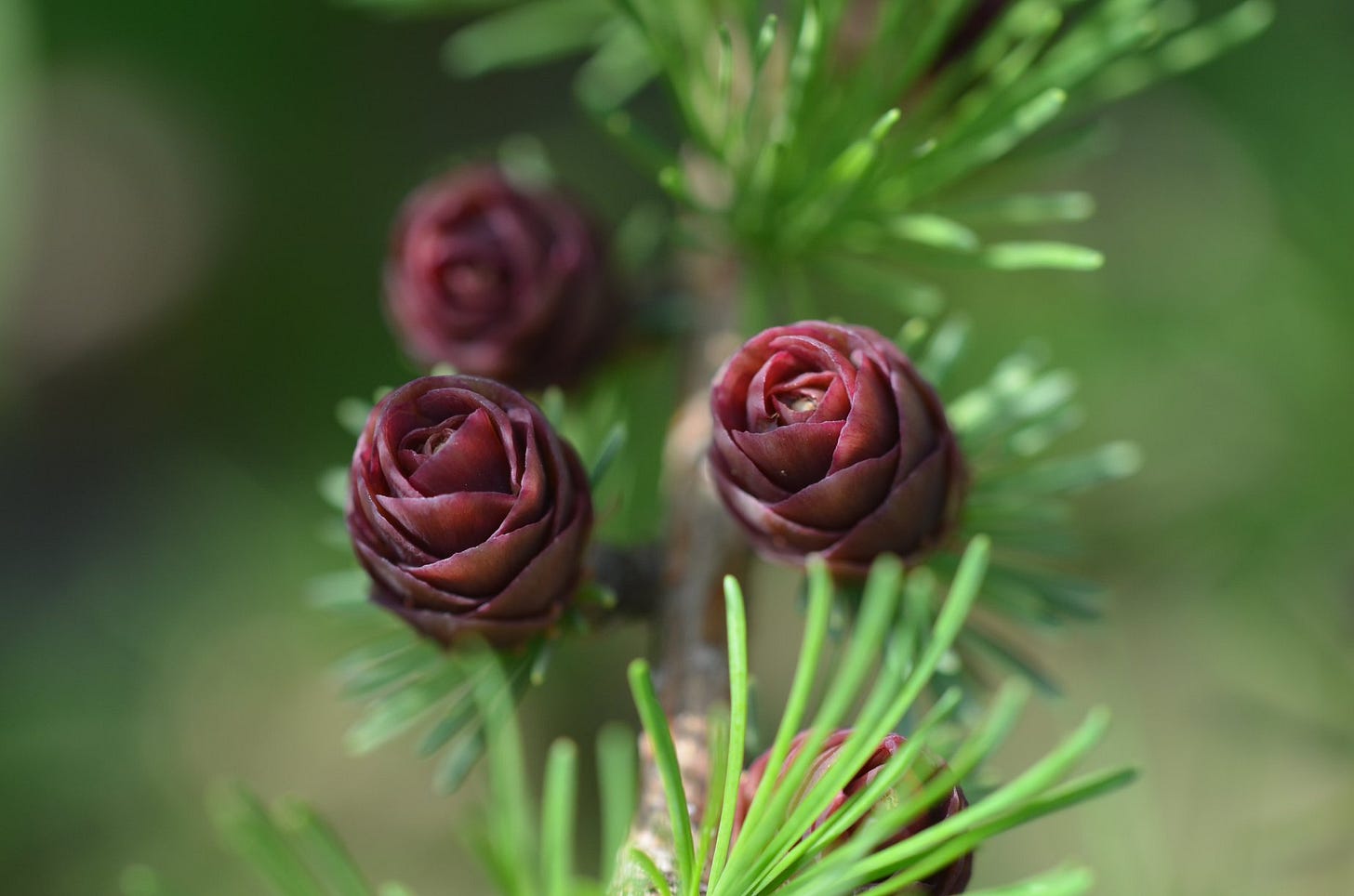
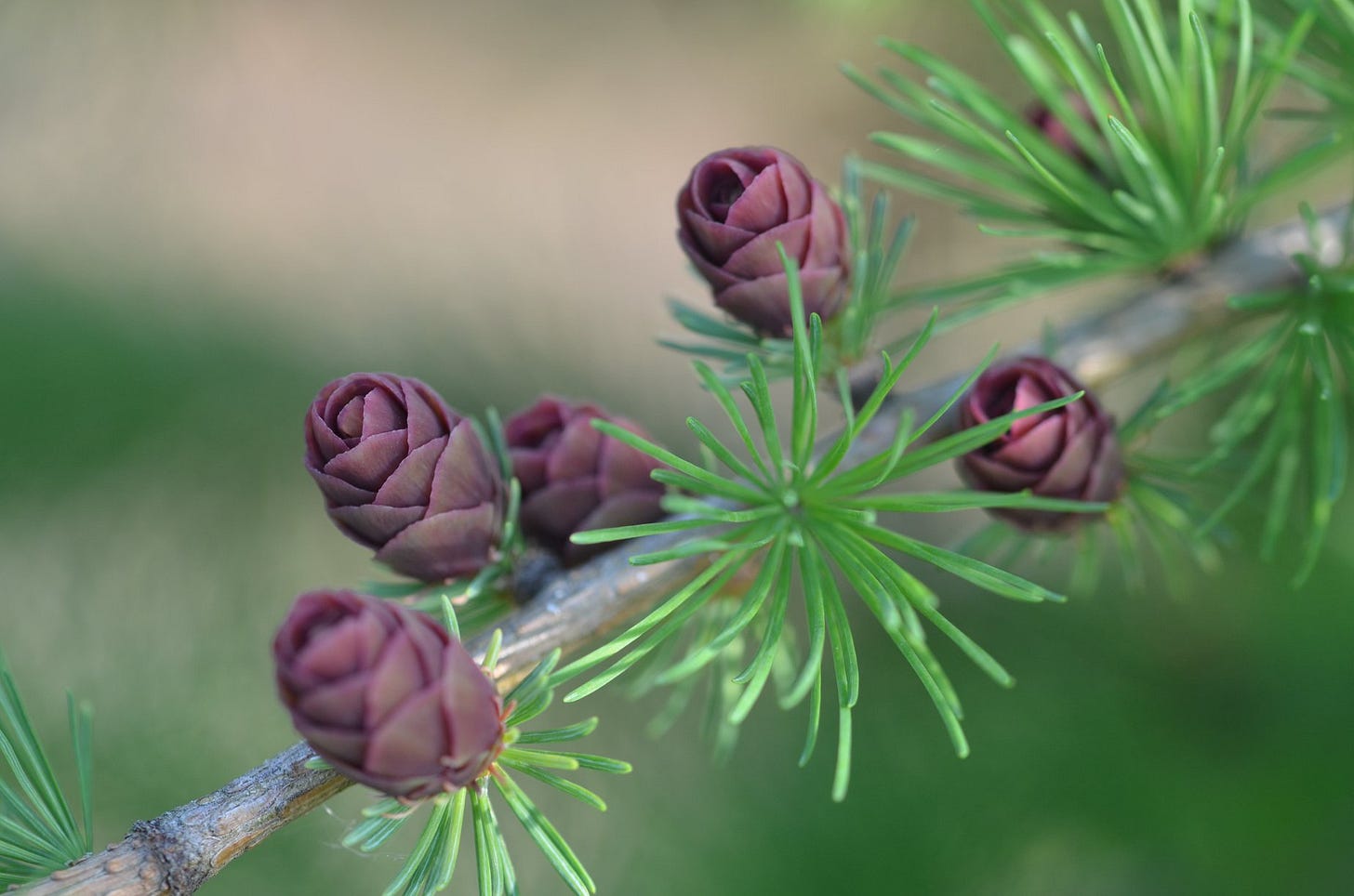
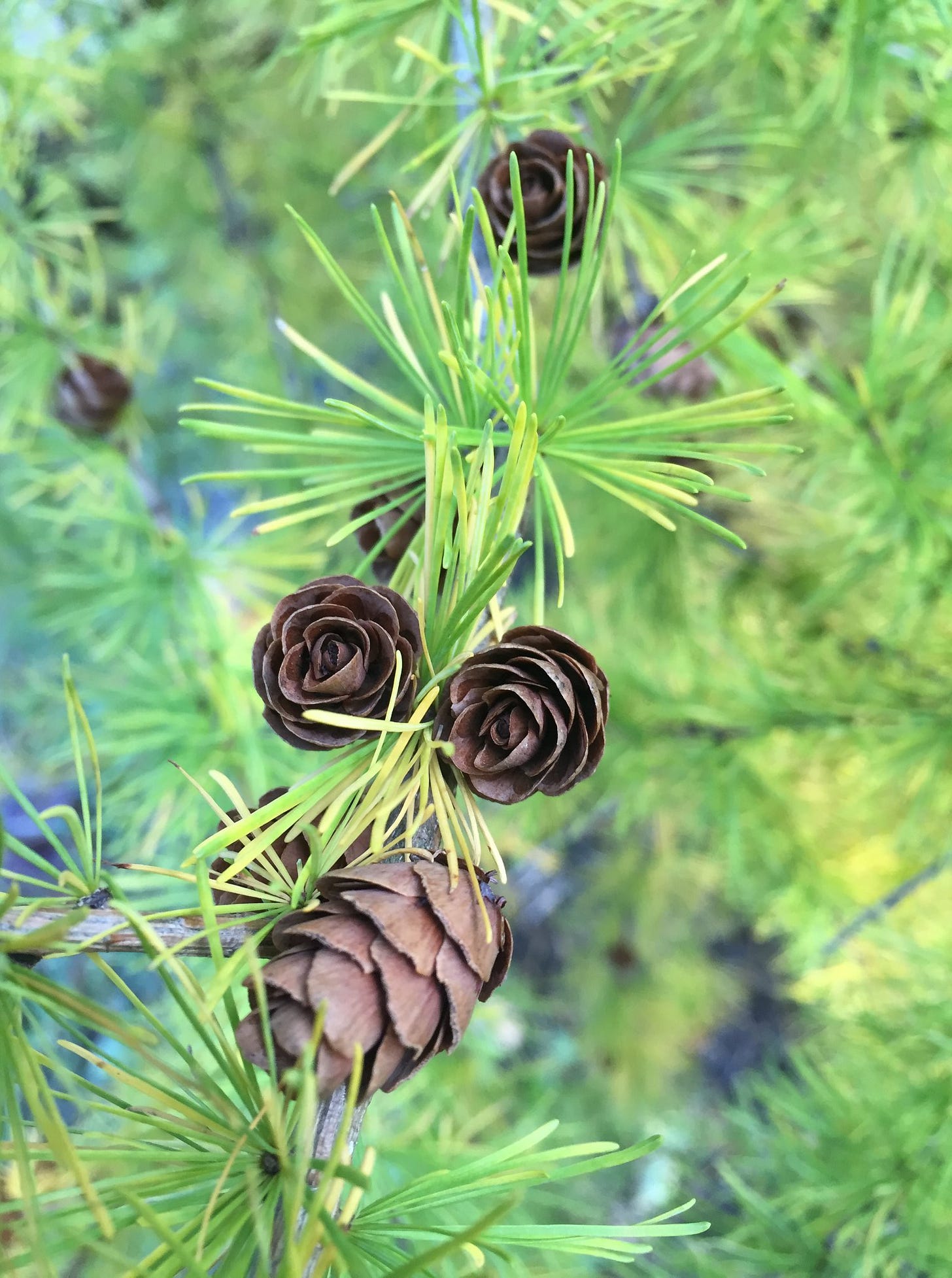


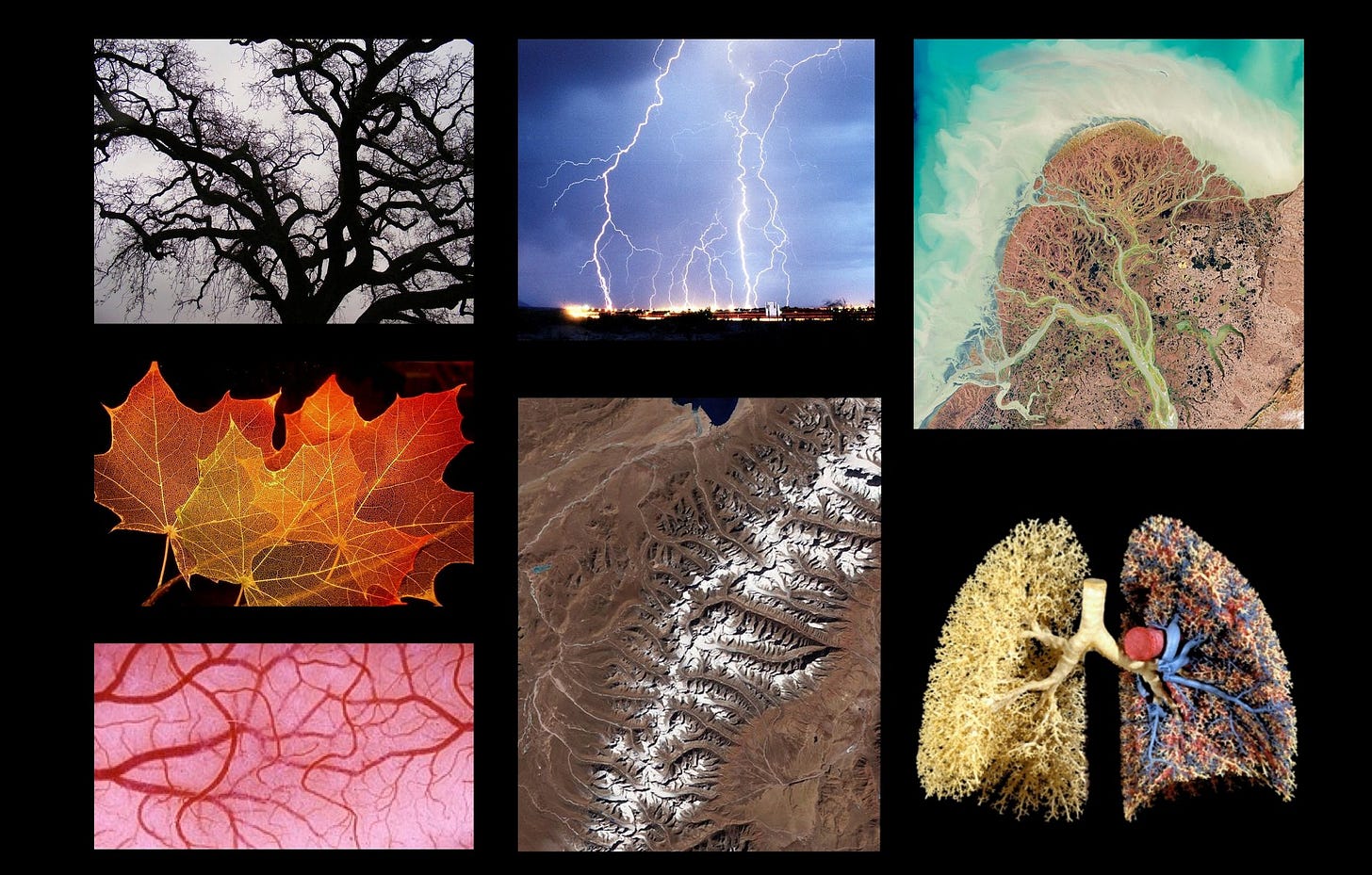
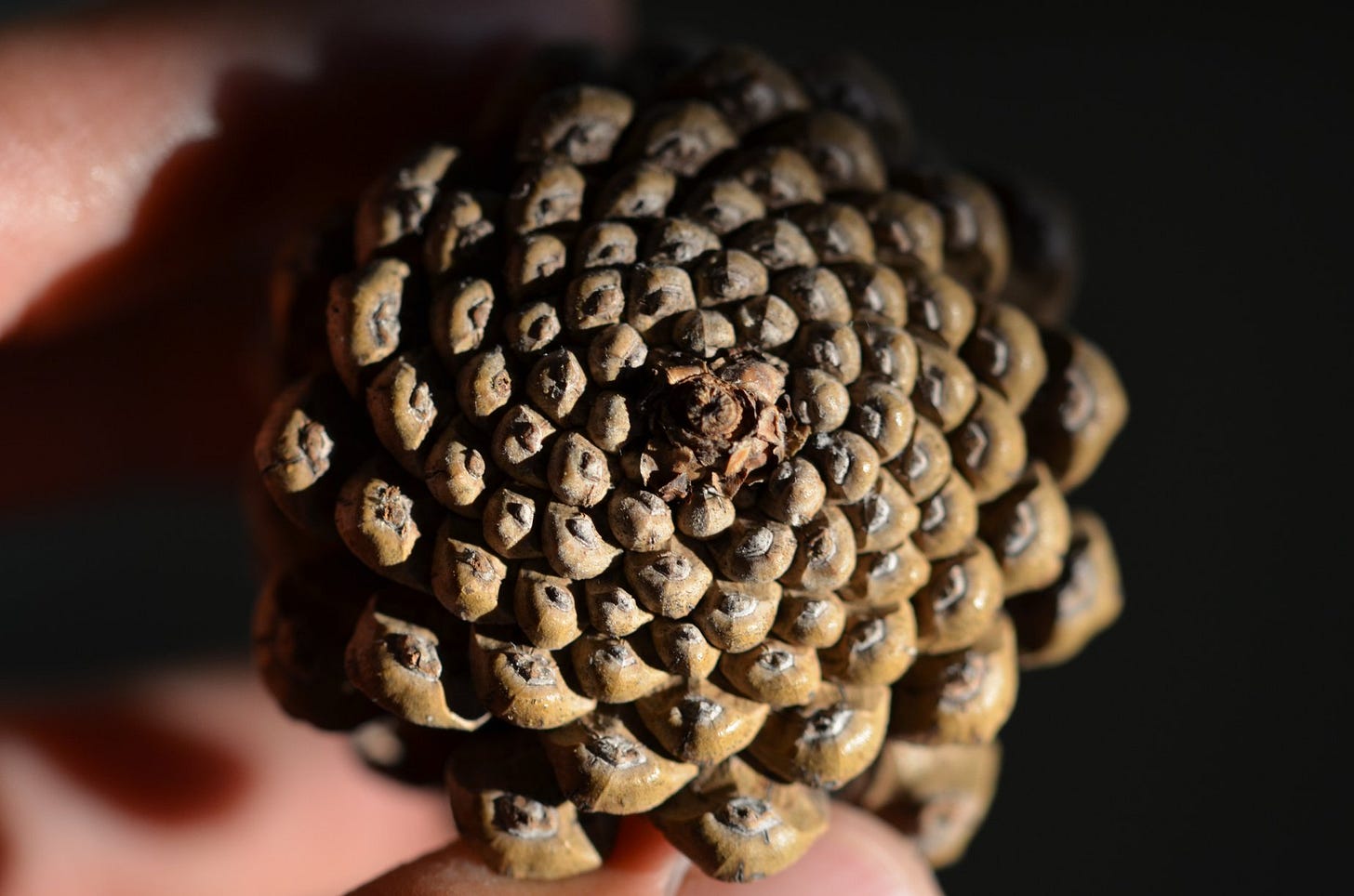

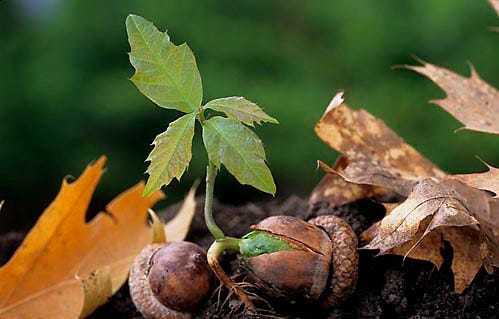
Gavin, you have taught me so much about Mother Earth's offspring throughout our life together, and i am sure in the years to come i will continue to learn oodles more. But even more than that is that you have changed my perspective. There was a time when i did not notice the beauty of fall. All i saw was the end of summer and i would become sad but through our 12 autumns together you have gently shown me the wonder of autumn and now i look forward to its crisp morning, its sun-kissed jeweled colors and the beautiful leaves that don our grass. I look forward to this year's bonfire nights wrapped in a blanket with you as we watch the gorgeous crystal clear stars over head and the dancing flames that illuminate the leaves as they fall. Thank you for helping me to unfold my perspective and unlocking the love in my heart for this beautiful season called autumn. ❤️
Really enjoyed that. Only 2 of them grow here. But learning about all of them is rewarding for me.
We call the cone/sugar ferments mugolio. It is an Italian thing. Our neighbour had an actual Mugo pine we make the real deal from.
Peace.